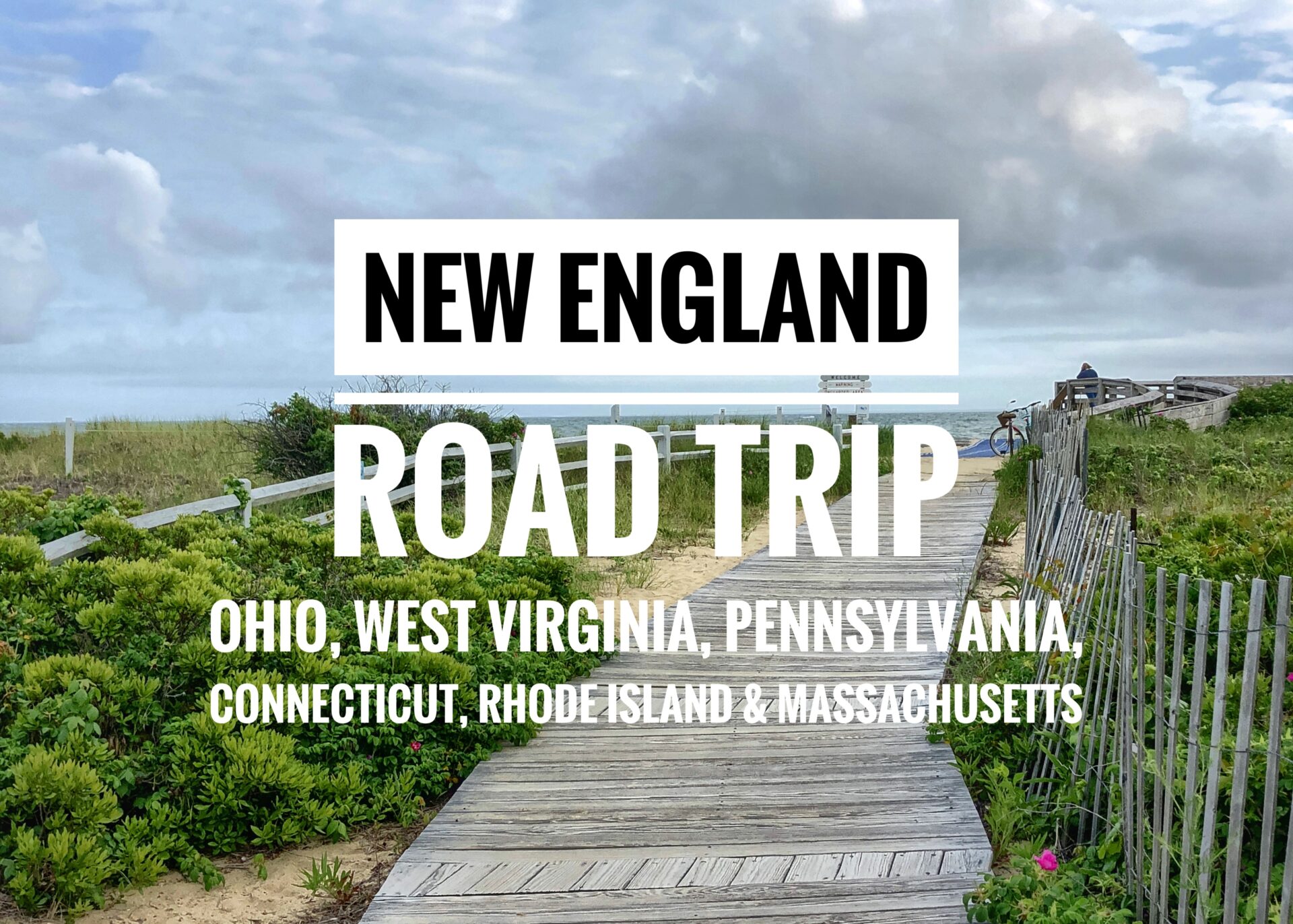
Our New England road trip was two weeks long and an absolute whirlwind. Certainly not anywhere on the spectrum of our typical “slow travel” preferences. It took us to 12 states, many of which were Greg’s firsts, and allowed Mandy to get her official membership to the 50-stataterian club as she checked off Vermont.
It took us to prestigious Ivy League universities, to ostentatious Gilded Age mansions, and to sand swept seashores dotted with lighthouses and seagulls. We absorbed history we’ve learned about our whole lives, more tokens of silly Americana than we can count, and encountered some of the most open-minded people we’ve seen in our country. On the driving front, we battled more aggressive drivers than we’d experienced in years, skipped tolls on accident and bickered more than ever in our relationship, before constantly ganging up on the Google Maps lady for not being specific enough in her directions. After this trip we concluded…we’re done with driving. Please give us our bus, trains, boat, horse, camel and foot transportation any day.
Despite our best efforts to save and camp, or stay with people the whole time, it was also an expensive trip so we doubt we’ll be back here anytime soon. Daily expenses averaged $81/day, which far exceeds our normal $40/day. That included: groceries, car rental, gas, ice cream, (a must splurge!) campsites (which were a steep $25-$40/night) and few tourist attractions. That said, we are very glad we got to experience this part of the country, as every state in New England is unique, packed with history from our founding fathers and just offers more charm than other places we’ve experienced in the States.
Indiana

From Evansville, we headed east and landed in Indiana’s first capital of Corydon. As always in the States, we allowed our trusty Roadside America app to be our guide which first led us the one and only family-run Butt Drugs, made famous by a 2010 amusing commercial. (Really…click the link…haha!) Around since 1952, Butt Drugs has embraced its notoriety selling anything and everything bearing the words, “I love Butt Drugs.” Also, make sure to grab “free parking in the rear.”
You can also slide YOUR butt onto one of the stools for a buttshake at their old-fashioned soda fountain.

Or, just have a look around in their “buttique.”

After our butt chuckles were put to rest, it was time to put on our somber historic faces to visit the Constitution Elm. At this historic stump, 43 delegates met in 1816 to draft Indiana’s first constitution. They were under this enormous elm tree due to the sweltering heat. It died in 1925, but its trunk is still preserved thanks to this unique covering.

We’ve seen lots of covered bridges, but this may have been our first pedestrian-only covered bridge. So cute!!
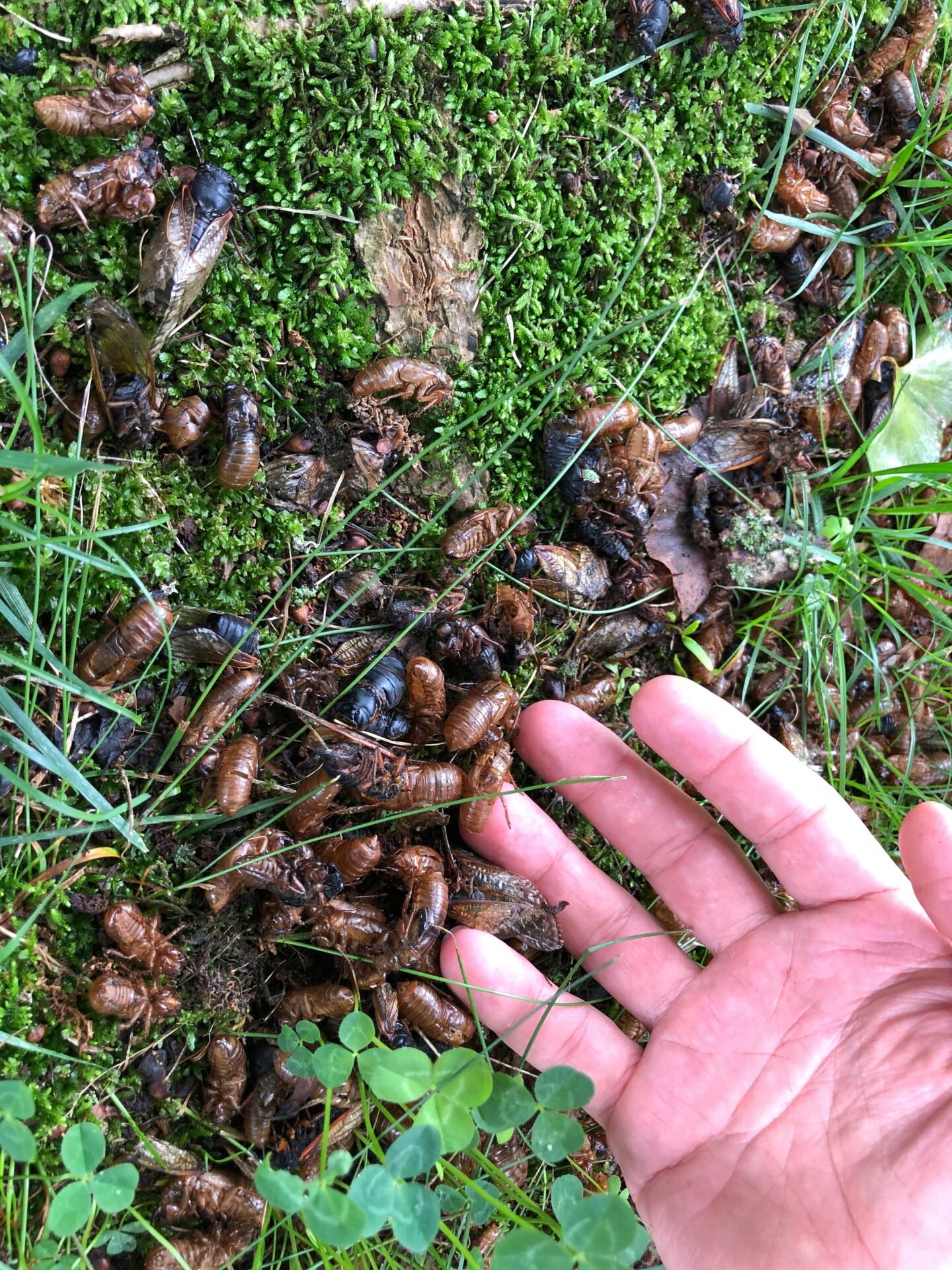
It was shortly after this that our lovely little rental car began getting pounded with hundreds of cicadas which swarmed from Tennessee to New York in early June. It was remarkable to get out and see their corpses piled on the sides of the road. These cicadas have been subterranean for 17 years, tunneling and feeding beneath the soil. When they are back above ground, finding a mate is a top priority. The loud drone like sound they make is actually a mating song emitted by male insects.
Kentucky
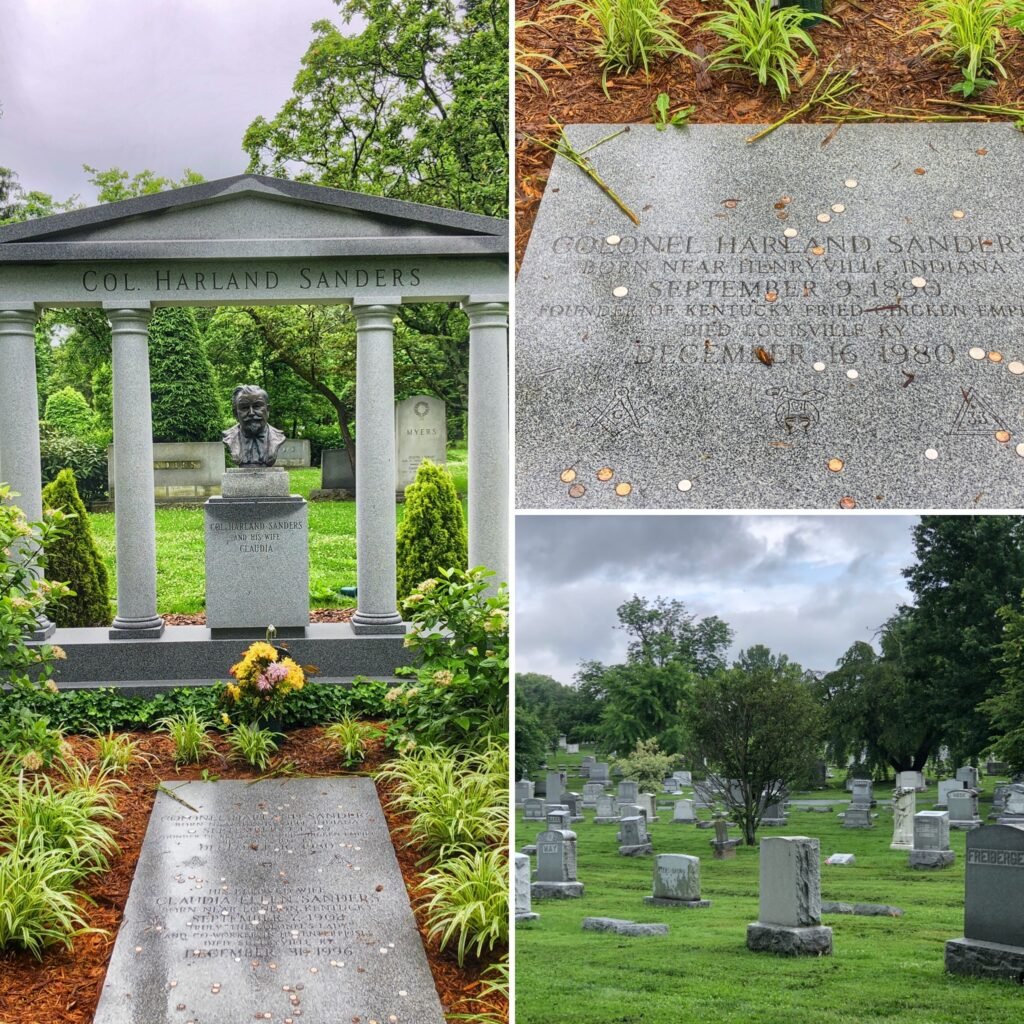
Moving onto fried chicken land, aka Louisville, Kentucky….Although he might look a little different without the red and white striped ensemble, and crispy chicken perfume, this is the final resting place of Colonel Sanders, a face known far and wide throughout the world. KFC, or Kentucky Fried Chicken, founded in 1952, is the world’s second largest fast food chain with 22,621 locations in 150 countries. KFC is so popular that many Japanese people actually eat it as an annual tradition for Christmas dinner thanks to a very effective 1974 marketing campaign. Also, rather unfortunately, “finger lickin’ good” wasn’t translated very well in the first few locations in China, so the famous catchphrase was “eat your fingers off” in China for a while… ?

Also at Cave Hill Cemetery, our app led us to this unique tombstone called “Jesus is my swing set” which is the grave of three-year-old Samantha Ann McDonald, who rode her tricycle into the family pool in 2006. According to Roadside America, “The memorial, by Maine sculptor Tom White, is officially titled “Sami Swings,” and was designed as a public expression of the McDonald family’s spiritual faith. The grave monument incorporates an elaborate life-size bronze statue of the upper half of Jesus, laughing heartily, as he leans out of heaven (identified as “Sam’s Rock”) and holds the ropes of a swing supporting the barefooted, smiling Sami. According to Sami’s mom, the little girl’s favorite expression was a McDonald’s commercial catchphrase, I’m lovin’ it!, which her parents believe describes the way she currently feels in heaven.”
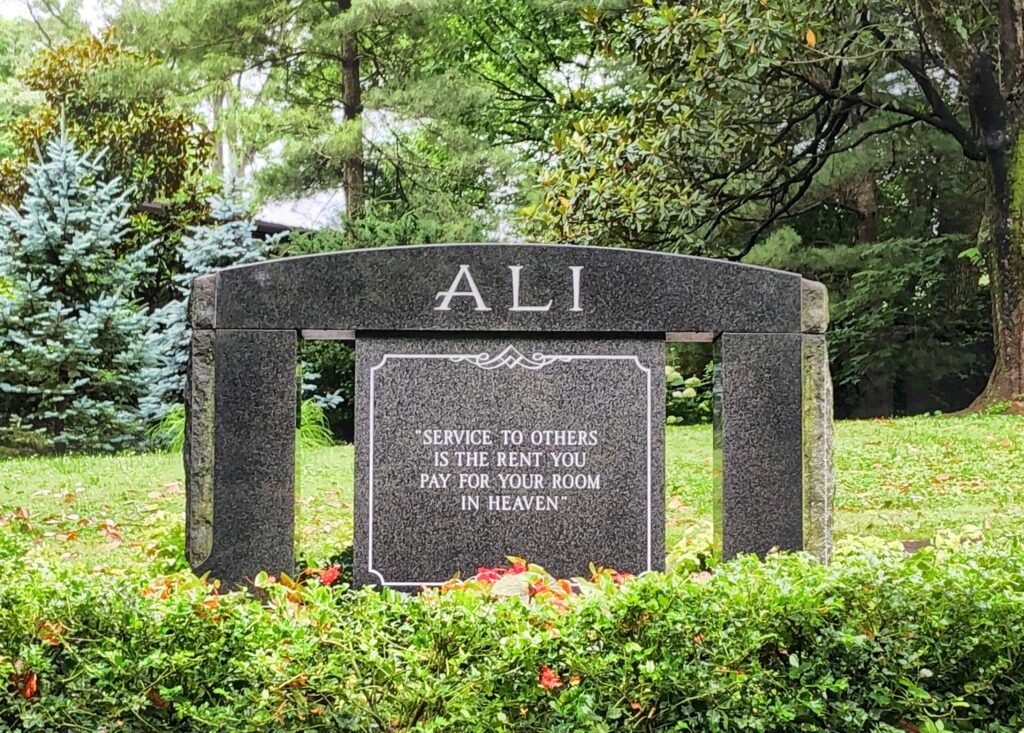
Lastly, at Cave Hill Cemetery you will find the final resting spot of Muhammad Ali, who died in 2016. What an action-packed little cemetery. Apologies for the oxymoron.
Ohio



Because Mandy once lived in Columbus, we had several visits to make. We stayed with Cindy, a former co-worker, as well as Mandy’s college roommate, Lori and also saw her good friend Gina, who she used to work with at Moretti’s Italian Restaurant.

We also paused at the Columbus Convention Center to check out…the coolest photo booth EVER and an opportunity to have our heads forever enshrined on the giant 3-D 14’ selfie station. Naturally, it was closed, but we got to see lots of other scrolling heads.
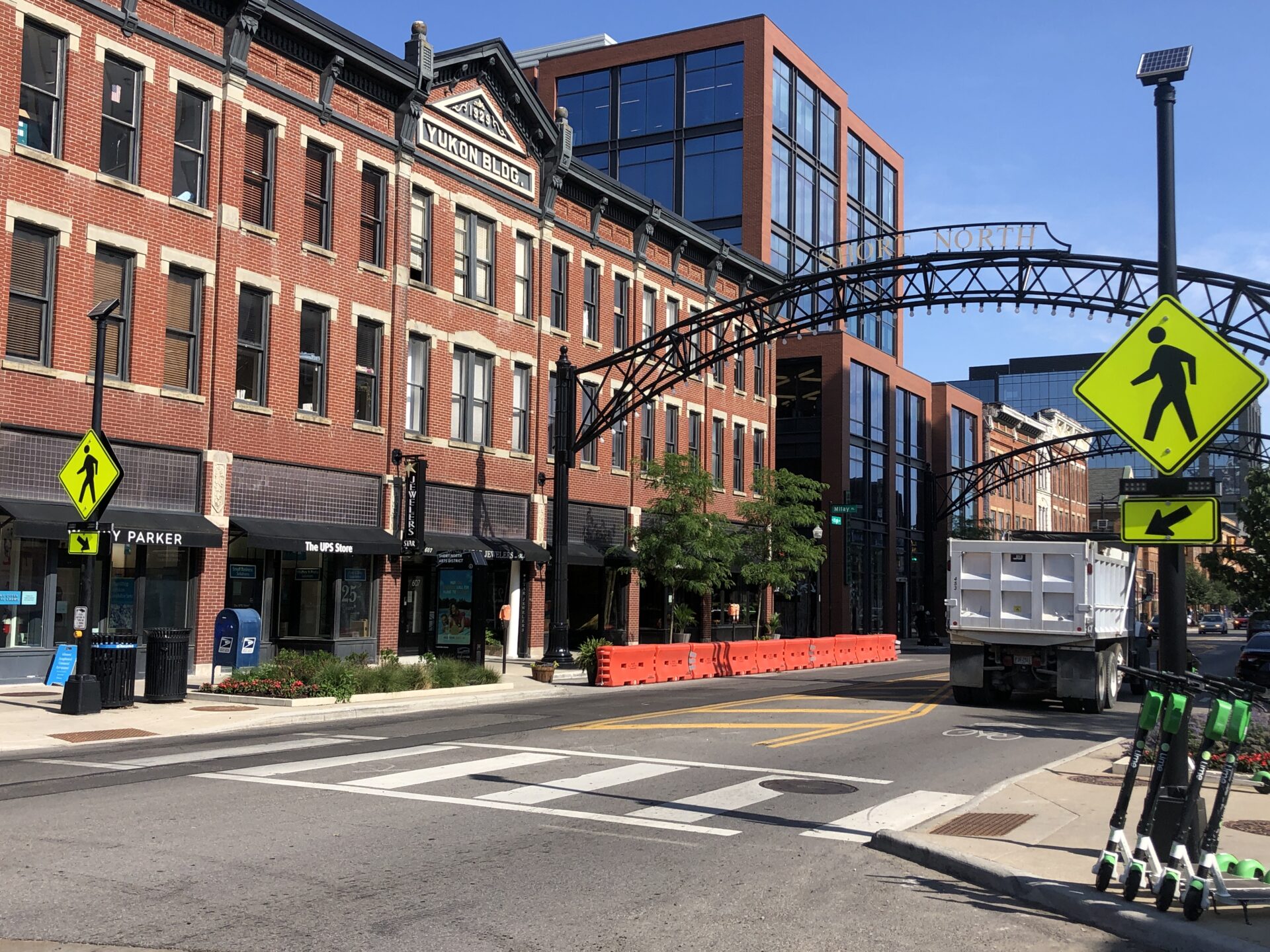
Since we’d fed the parking meter for a two hour minimum, Mandy took the opportunity to show Greg the Short North neighborhood of one of her many former homes (2006-2007.)

Zanesville, Ohio is known for its pottery and was home to the now-gone World’s Largest Vase. This circle of custom decorated vases appear to have been part of a 2008 community art project.
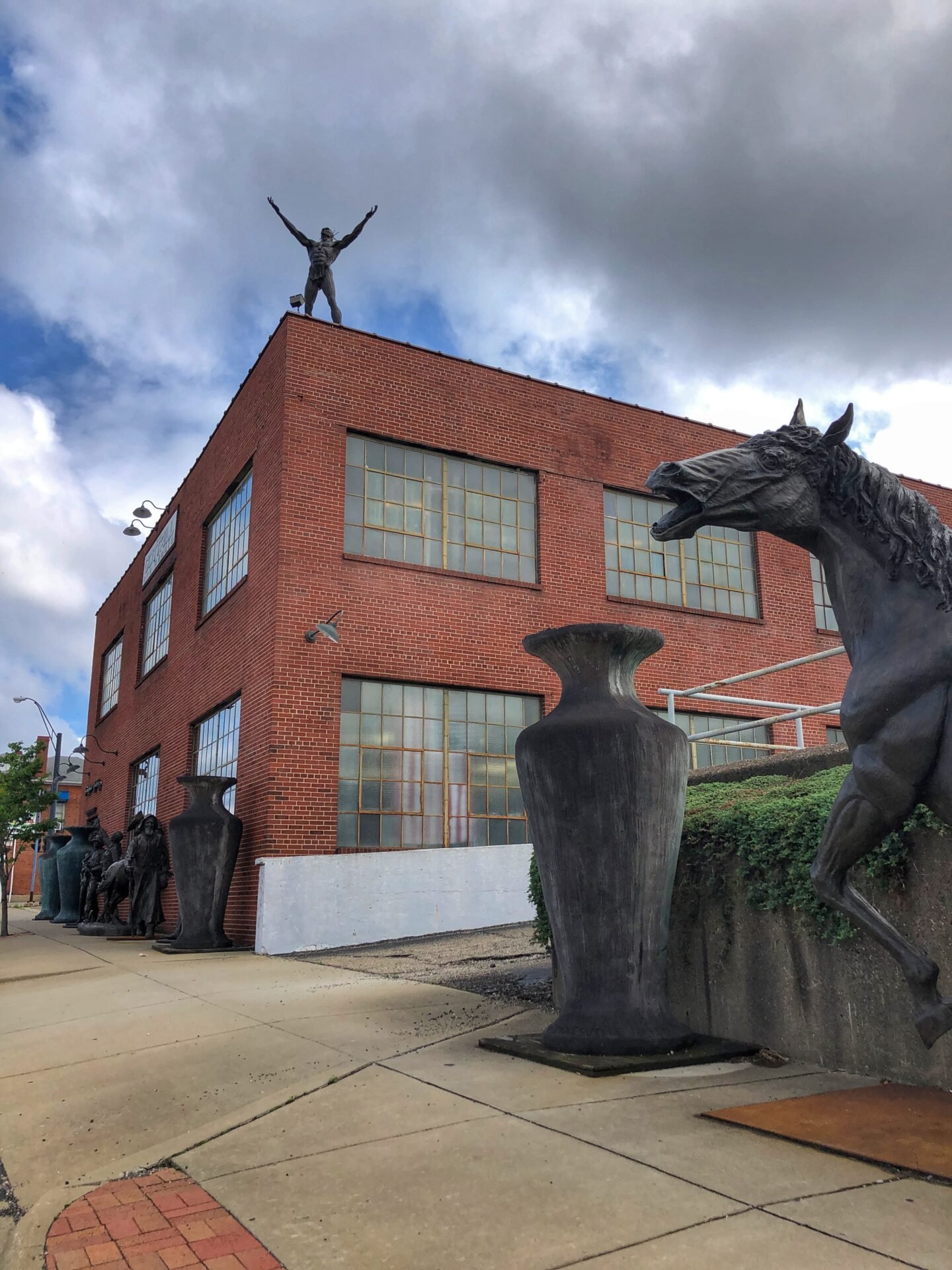
The block outside Alan Cottrill’s studio in Zanesville serves as an open-air bronze statue gallery. You can see a display of sheep wearing ice skates, life size horses, and a random guy on a roof. Is it him?!
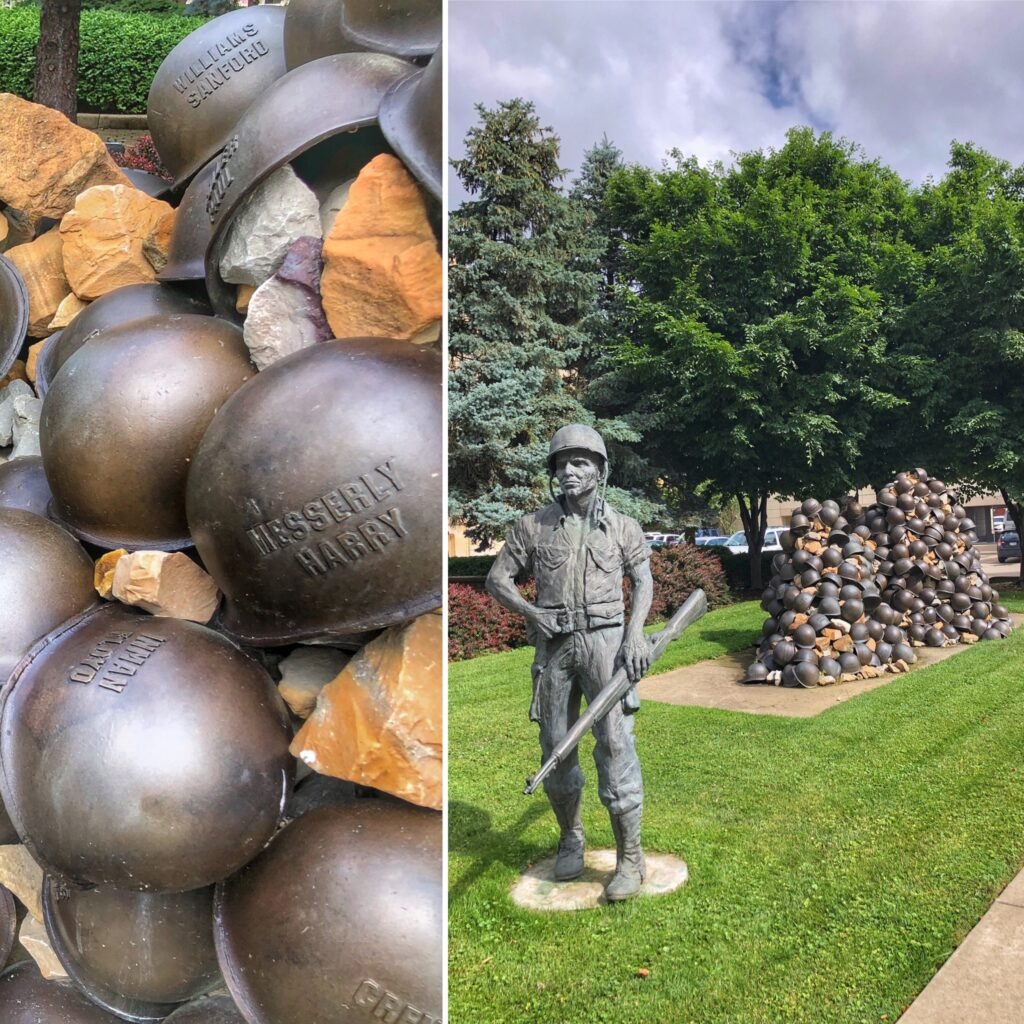
A wonderful, heart-warming tribute to the 297 men who gave their lives for their country during World War Il and the Korean War. The memorial consists of a pile of 297 helmets, each inscribed with the name of the fallen soldier, and three full sized bronze statues representing strong emotions. (Zanesville).
West Virginia

As we rolled into a state where “mountaineers are always free,” we were excited to kick off our shoes, at a top rated “five water tower” attraction on our Roadside America app called the Prabhupada Palace of Gold.

Plopped on a secluded hilltop in West Virginia near Wheeling, the Palace of Gold bizarrely transports you to the sparkling and exotic land of India. It is the crown jewel of New Vrindban, a “curry-favoring utopia” founded in the late 1960s by the followers of Hare Krishna. It was meant to be a home for Krishna’s spiritual leader, Prabhupada. Sadly he died two years before it opened.

The place soon grew into a pilgrimage destination and palace fit for a raja, with crystal chandeliers, marble floors, immaculate stained glass windows, and mirrored ceilings.
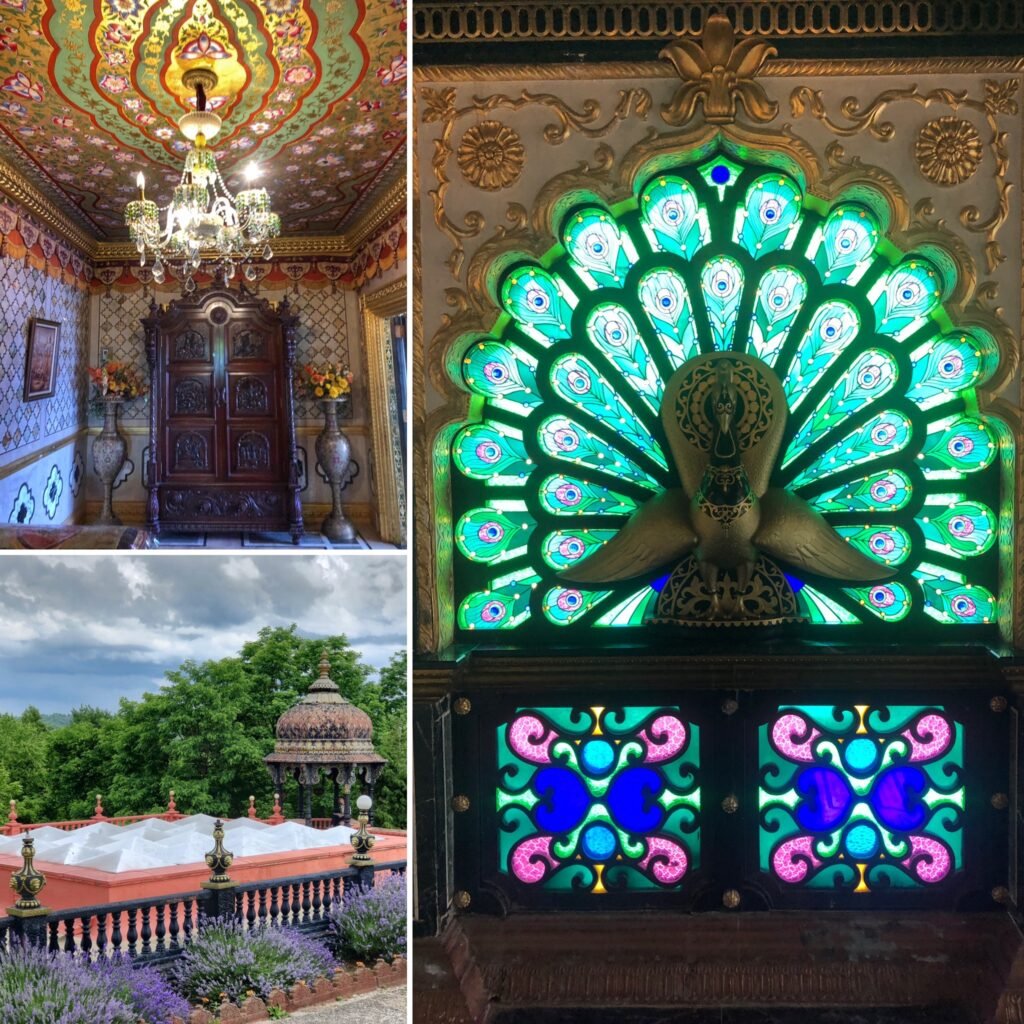
Gold leaf and glittering stones accent its architectural touches.
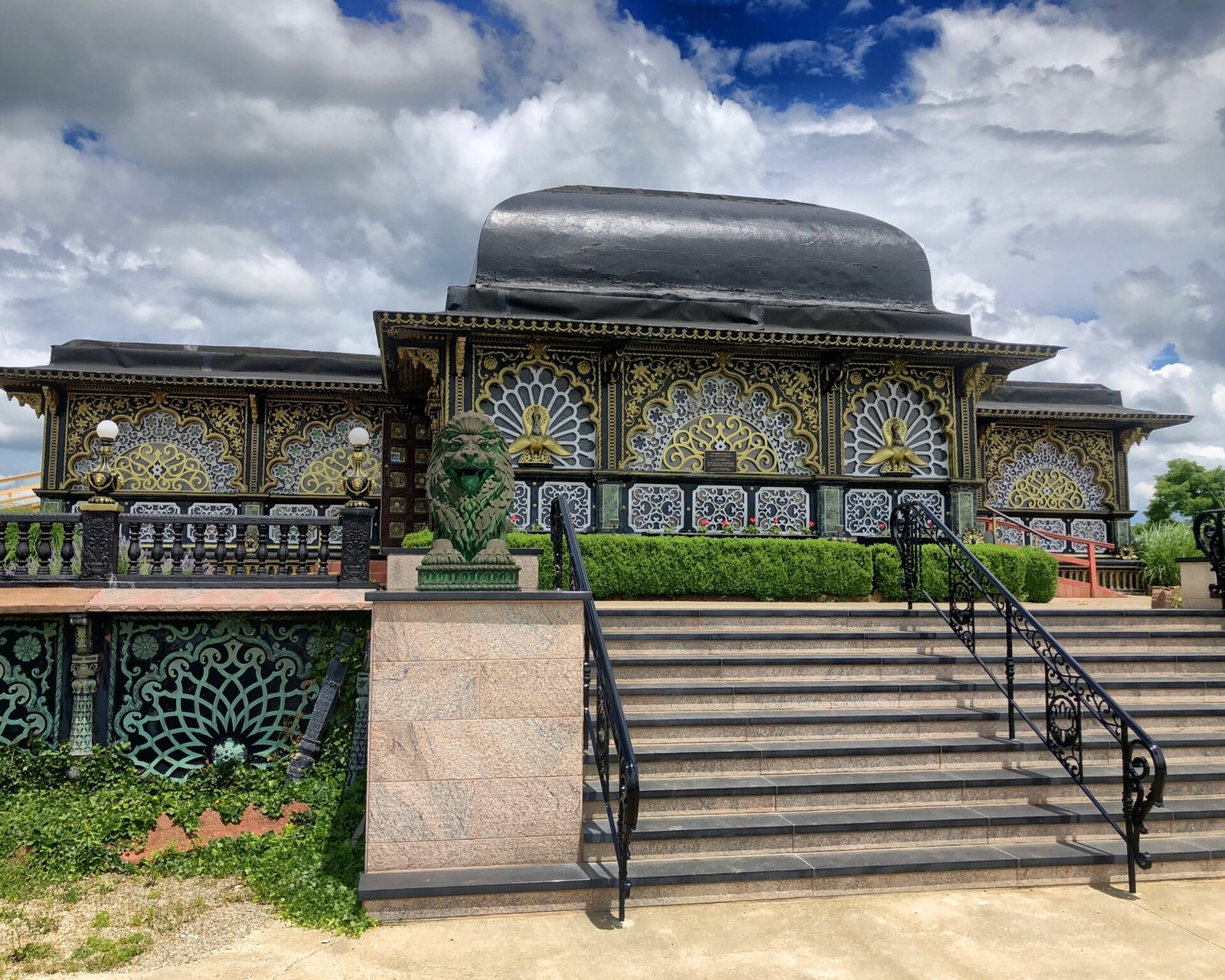
Pilgrims and visitors are always welcome at the Palace of Gold. And believe it or not, pilgrims indeed come from far and wide, including Bhutan and Nepal on our visit. The tour is $12. As in the land of Hindu, you will need to remove your shoes or place booty covers over your existing shoes.

Surrounded by fountains, fragrant gardens, and a lily pond called Swan Lake, it is utterly out of place on a back road in West Virginia. But how perfect for the yoga and meditation retreats they offer.

Although the swan boat was moored, Mandy perched on the edge of the loading platform recognizing this is probably the only time in her life she’ll be a West Virginia Indian princess.

The property is also replete with peacocks including these rare albino ones.
Maryland

In La Vale, Maryland, we stopped at the First Toll Gate on the National Road which was the USA’s first long-distance highway, running 620 miles from Cumberland, Maryland, to Vandalia, Illinois. This seven-sided toll gate house was built circa 1833 and restored in 2019. Toll collectors earned $200 a year and had free living quarters.

A Rates of Toll table lays out detailed cost calculations: “For every Carriage of pleasure by Whatever be it called, the same according to the number of wheels and horses drawing the same.” (RoadsideAmerica.com)
Pennsylvania
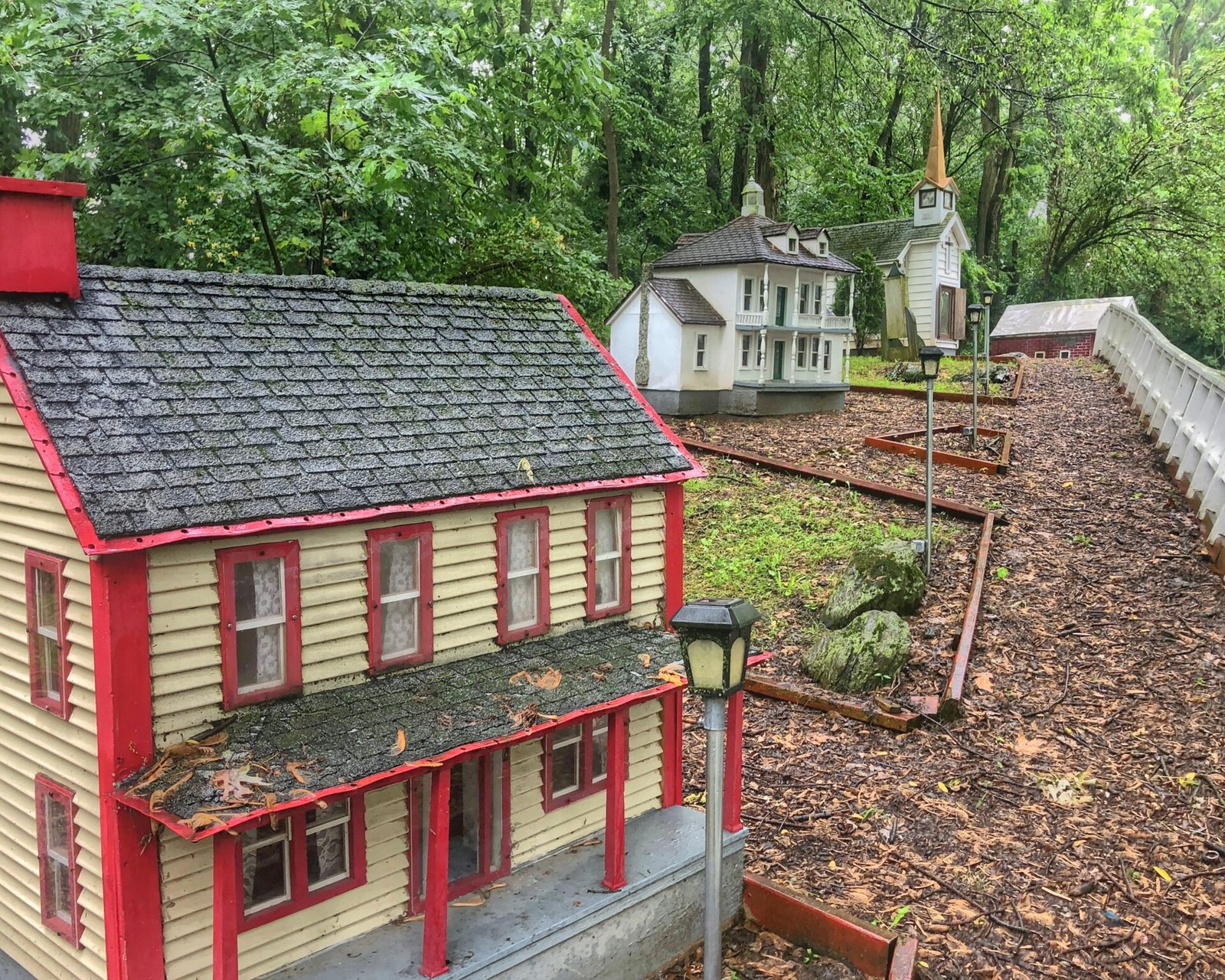
This intricate tiny world was built in Schippensburg, Pennsylvania by retired Ernest Helms as a utopia for his cats in the late 1980’s. Although he has since passed, the cats clearly still run this town and use its porches and eaves as shelter from the rain. According to Roadside America, they also used to use the insides of the buildings but it appears those have been closed off. A few houses and the church.

The Texaco filling station. He made sure to add lots of details inside the buildings as well.
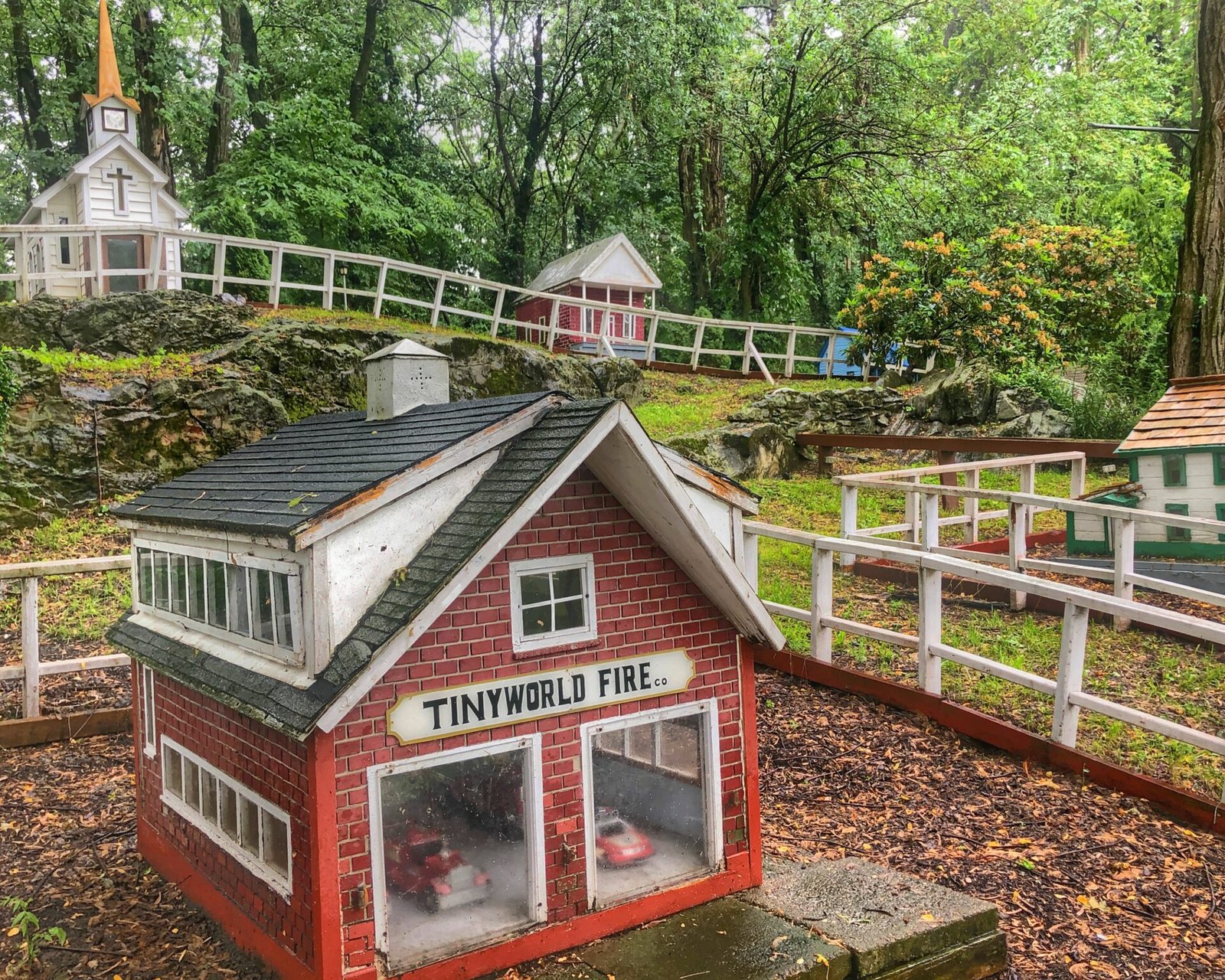
The fire department and church
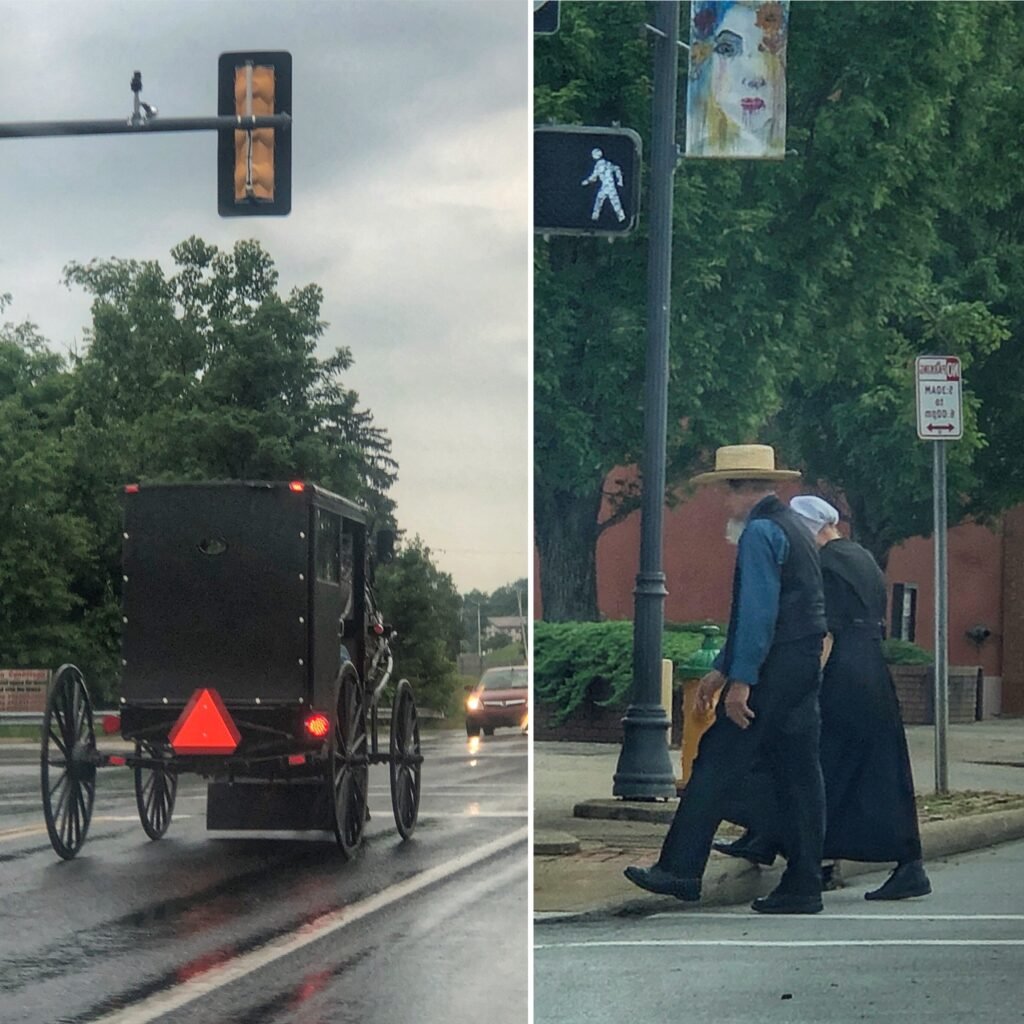
Also, in this part of Pennsylvania, we started encountering Amish people in the stores and on the streets. Greg was fascinated by this culture, having never witnessed it firsthand. For those that aren’t familiar, the Amish are a group of traditionalist Christian church fellowships with Swiss German and Alsatian Anabaptiat origins. They are known for living a simple and plain life, free of many modern technologies and conveniences, which includes bopping around in horse and buggies and participating in manual farming. A few things we learned:
- According to Wikipedia, there are around 350k of them and the largest populations are in Indiana, Ohio and Pennsylvania.
- There are old and new world order sects, which have different rules
- Between the ages of 14 and 18, Amish teens have the opportunity to join the secular world known as Rumspringa. During this time, the teens decide whether or not they want to leave the Amish community entirely or if they’d like to return, become baptized, and dedicate themselves to the Amish way of life. (amishviewinn.com)
- Men without beards are typically waiting for marriage to grow them out as a symbol of “transition to manhood.”
- They have lower risks of cancer, most likely due to their healthy, chemical-free lifestyle with no vices
- Their clothing is handmade and simple. No patterns, zippers, buckles or collars and has plain colors.
- They have their own language
- Children are only required to attend school until eighth grade (age 14) and typically attend classes in one-room private schools.
- Some use cell phones, but typically only for business.

We arrived to Mandy’s sisters’ in Pennsylvania and spent three nights with them, as some time together was long overdue! Matt, Mandy’s brother-in-law, took us to the 1906 Pennsylvania majestic state house in nearby Harrisburg.

Its highlight is the central dome, which is almost as high as the length of a football field.
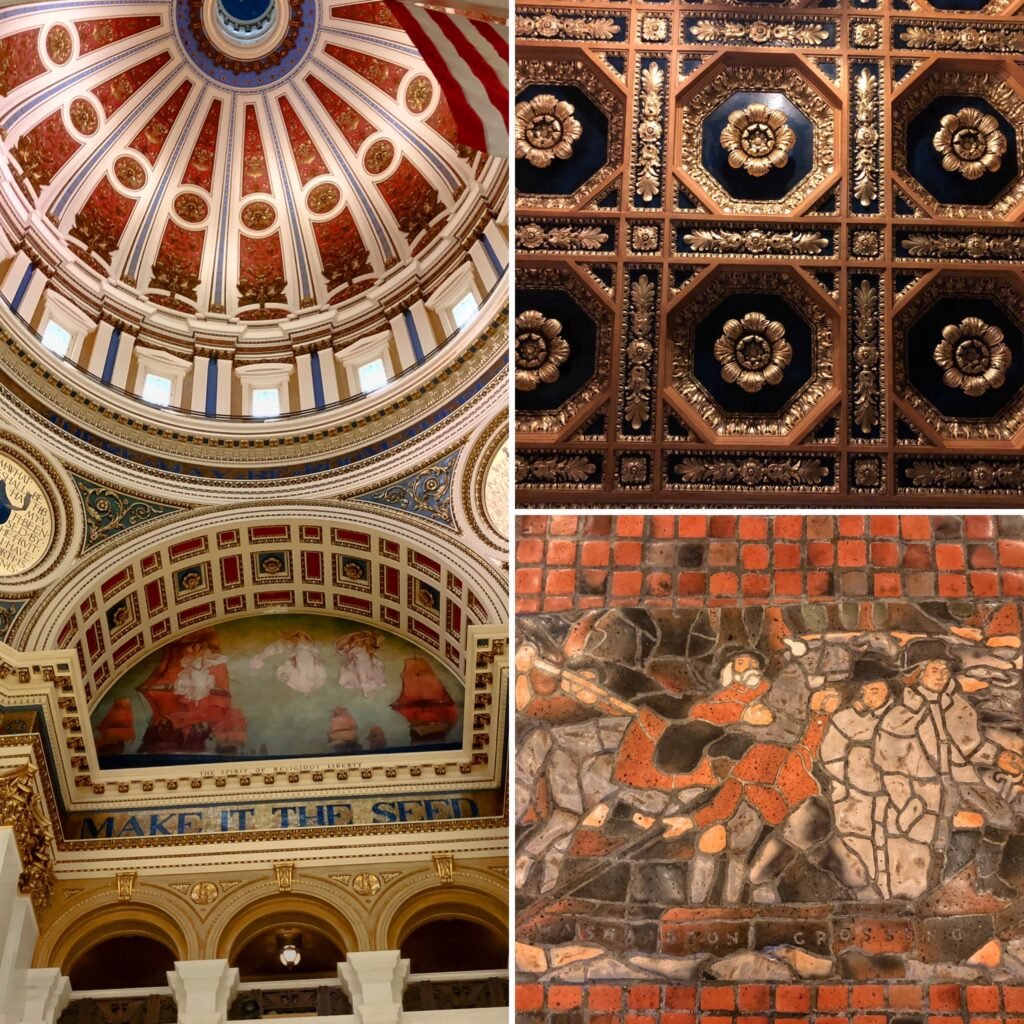
Some of the details throughout the building. We particularly appreciated the Moravian Mosaic tiles floor at the entrance to the building (bottom right). There are 400 tile artworks that tell the story of Pennsylvania throughout.

On another day…although not nearly as striking, the White Cliffs of Conoy are a bit reminiscent of the White Cliffs of Dover across the pond. They are located on the Northwest Lancaster County River Trail along the Susquehanna River and are the result of a limestone quarry which was formerly uphill from the cliffs.

Throughout the years the excess limestone from the quarry piled up near the river, which led to white mini mountains up to 30 feet tall. According to uncoverpa.com, it might be possible that the White Cliffs of Conoy are the first great industrial waste tourist attraction in the world.




Lots of great family time!

Stopping in Hershey to check out the light poles.

New Jersey
A Hindu temple in Bridgewater, New Jersey is a full functioning temple which has serious vibes from the Land of Curry. Leg two of our New England road trip gave us loads of flashbacks to our time in regular England as we weaved our way through Connecticut, Rhode Island and southern Massachusetts. Highlights included the mega mansions of Newport, standing where George Washington stood and gazing at the rock of all US rocks and uttering, “is that it?!”

This home was built by a wealthy iron manufacturer named Jacob Ford in the 1770’s. His wife, Theodosia, allowed General Washington and his military family of five secretaries and 18 servants to use as their quarters for six months in 1779.

Notable people who walked through this front door during the American Revolution included: George & Martha Washington and Alexander Hamilton.

Although Greg has not yet been to New York City, we chose to bypass it due to cost and time. We’ll save this for another trip! Bonus: As mentioned, we still got to take a spin with the crazy drivers.
Connecticut
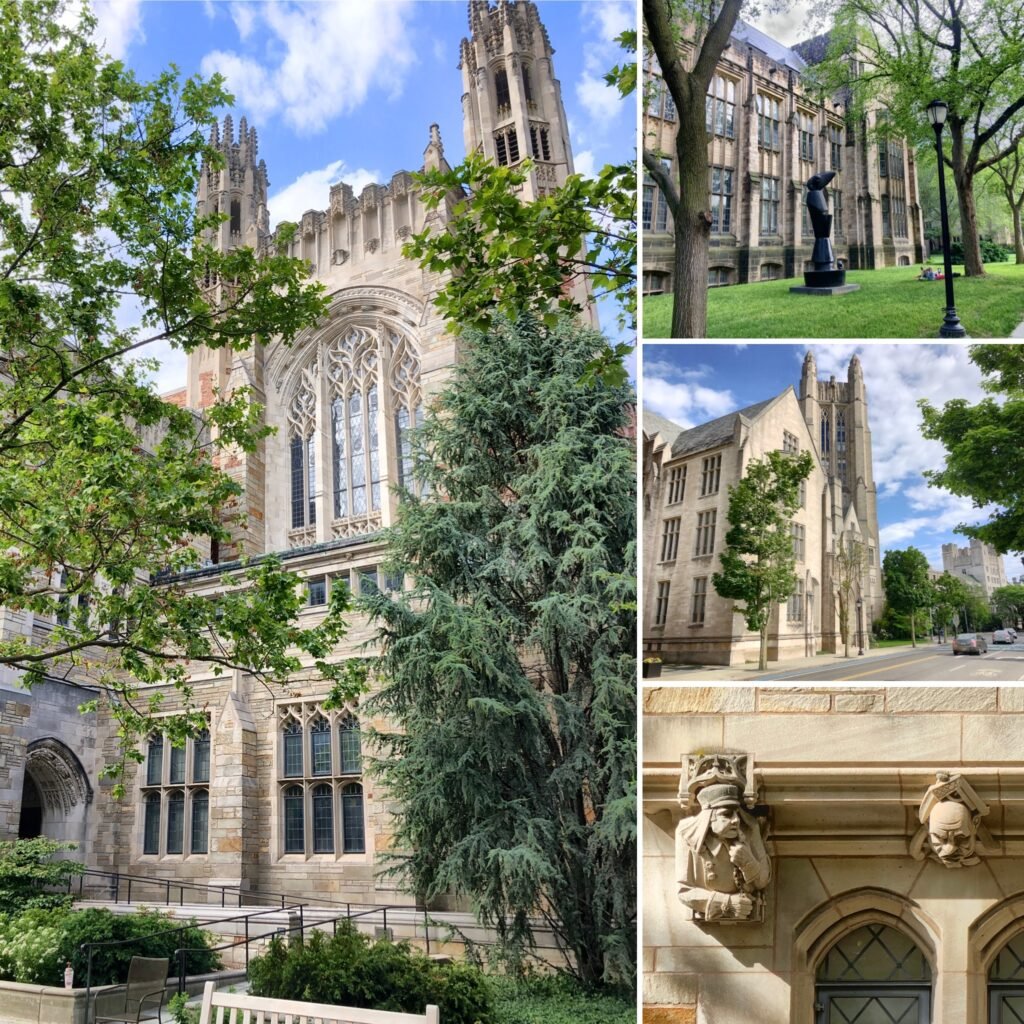
No trip to the northeastern US would be complete without a stop at a prestigious Ivy League University. Founded 75 years before our independence in 1701, Yale, in New Haven, Connecticut is probably one of the most notable of these schools. Pictured here is the residential Benjamin Franklin College.

A few facts about Yale:
-It’s a stunning campus draped in gothic architecture.
-It’s the third oldest university in the US after Harvard and College of William & Mary
-Yale is home to the oldest collegiate newspaper in existence from 1878.
-Notable alumni include both Bush presidents, Meryl Streep, Paul Newman, Anderson Cooper, Jodie Foster, Claire Danes, Sigourney Weaver, John Kerry, Ed Norton and many, many others.
-One year at Yale will set you back around $57,000 per year for an undergraduate.
-The student population is 41% White, 15% Asian, 10% Hispanic or Latino, 6%Black or African American, and about 6% Other.
-21% are international of around 4.5k undergrads.

Loved finding random bricks with “Yale” etched into the buildings.
Rhode Island
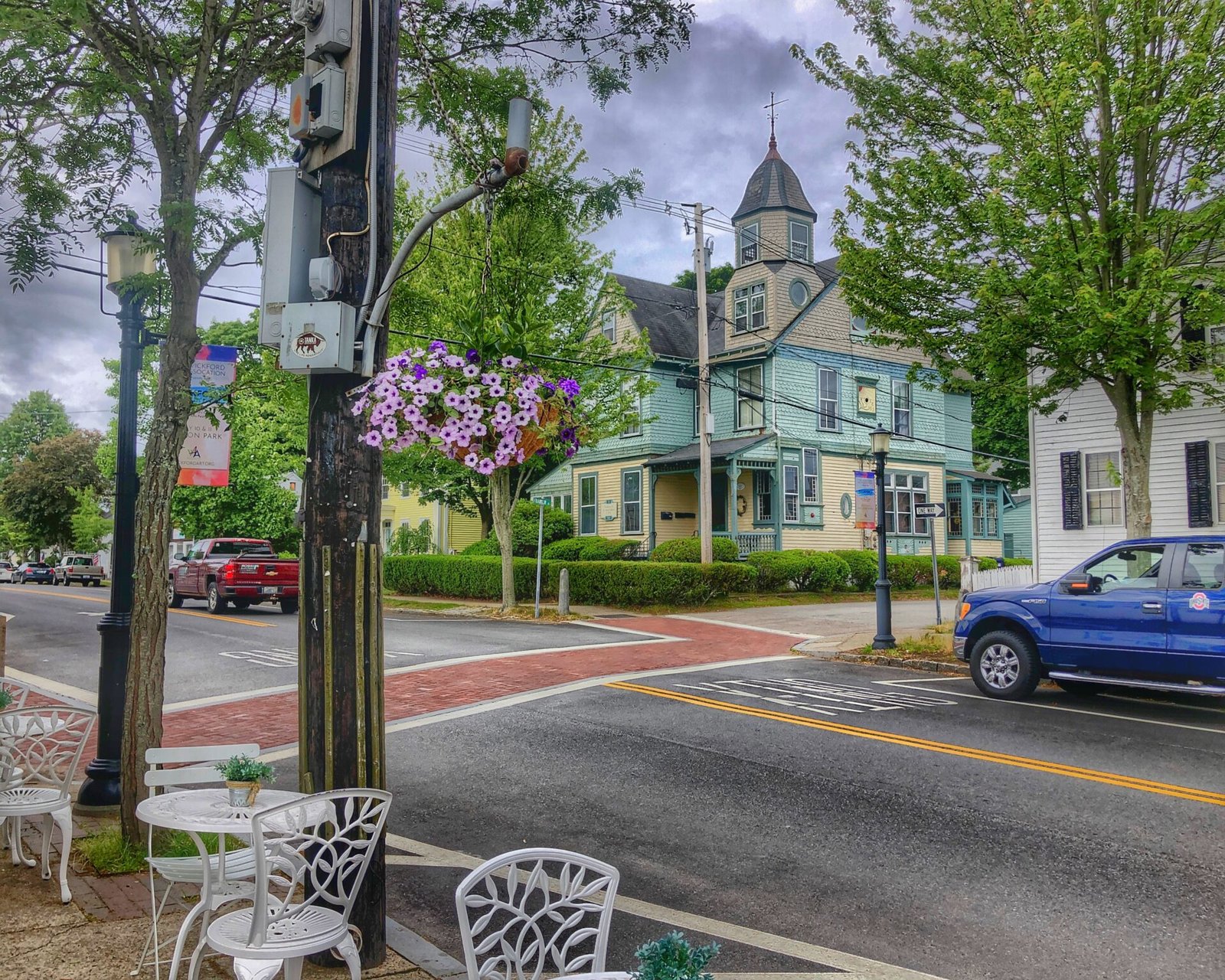
We stayed at a Hipcamp near Voluntown, Connecticut that evening, which was our first experience through that app. Hipcamp is the relatively new “Airbnb of camping” where people offer their yards or land for people to camp on. It was $25/night, which astonishingly is about $25 cheaper than traditional nearby campsites. We learned quickly that even camping in New England is EXPENSIVE so we had to find creative ways to cut costs. U be The next morning we entered Rhode Island, the smallest US state and started our exploration near Wickford Village, an absolutely charming town and “hidden gem” of the state.

The Wickford Cove

More Wickford Village. There were American flags everywhere throughout New England.
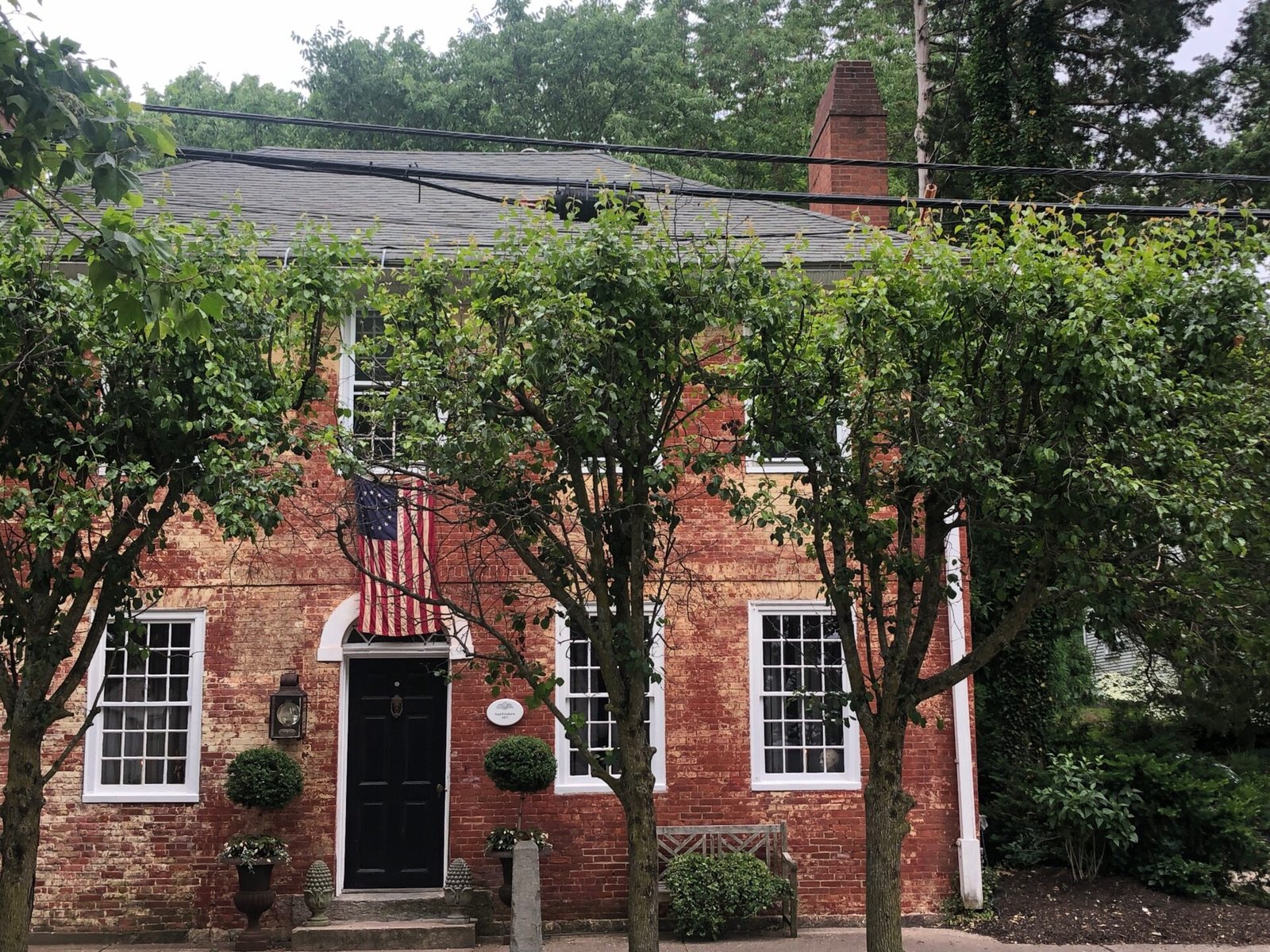
Can’t get more colonial looking than this. We loved that it hung the American flag from the 13 original colonies. The colonial population grew from about 2,000 to 2.4 million between 1625 and 1775, displacing Native Americans. Rhode Island was sixth of these colonies.

A Wickford Village traditional home.
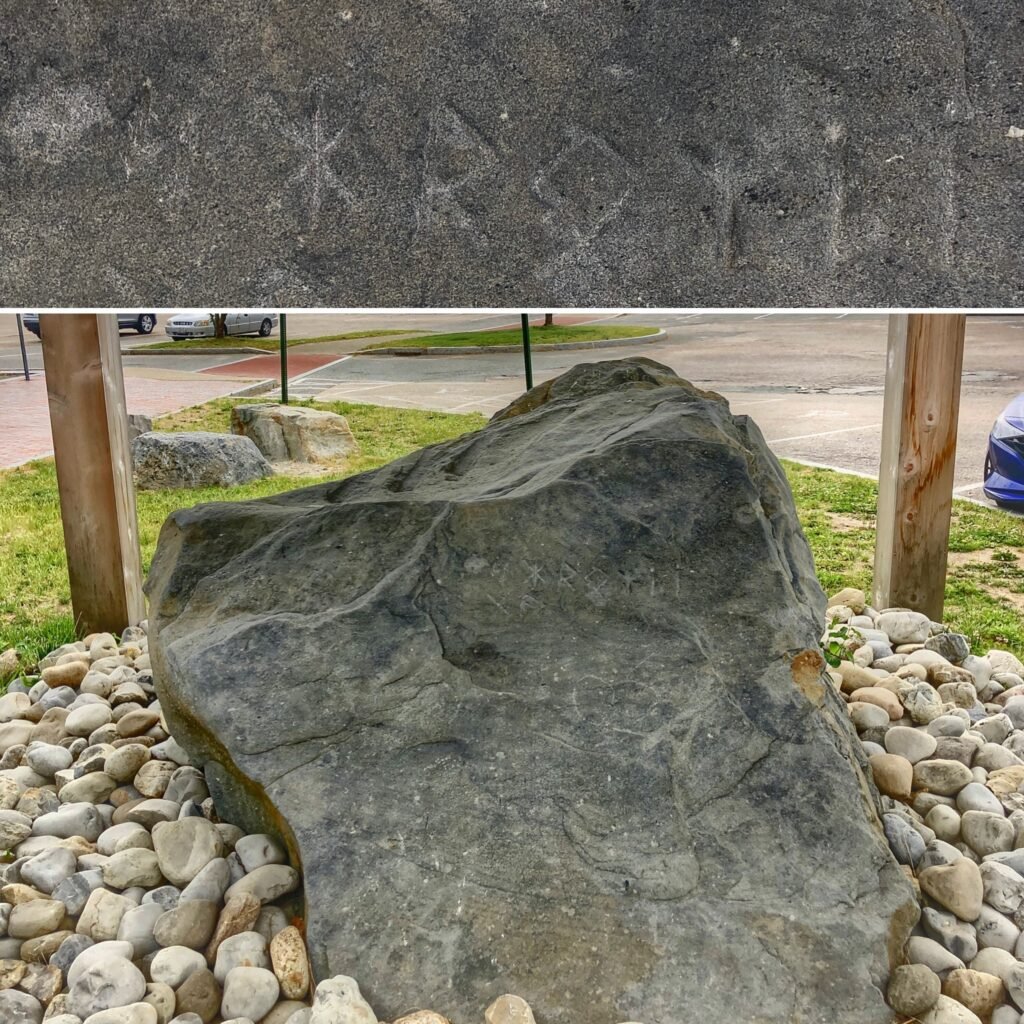
The Narragansett Rune Stone, also in Wickford, is said to be a piece of Viking graffiti, which until recently was submerged most hours of the day in Narraganestt Bay, only appearing at the lowest of tides. It remarkably may be proof that Vikings or other Norsemen were near the shores of modern day Rhode Island.

From Wickford, we moved south towards the more touristy areas of the state and arrived to about 20 minutes later to our first lighthouse…Beavertail. Wow! This state really is small! Beavertail is the third oldest lighthouse in the country from 1749.
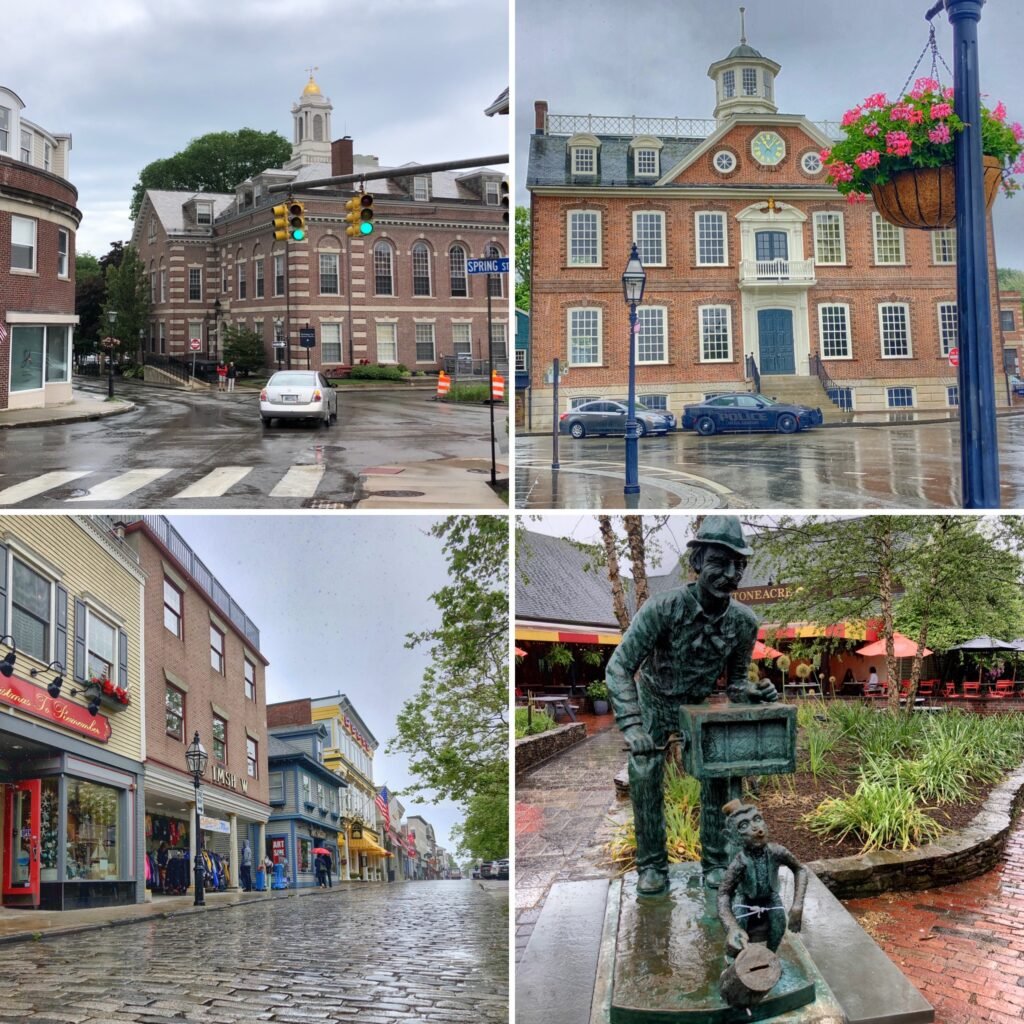
Arriving to one the most popular seaside escapes in New England, we were greeted to Newport by a torrential downpour, which followed us ceaselessly the whole time we were there. This added a suitable ambience for a town that brought striking flashbacks to our two months in the UK.
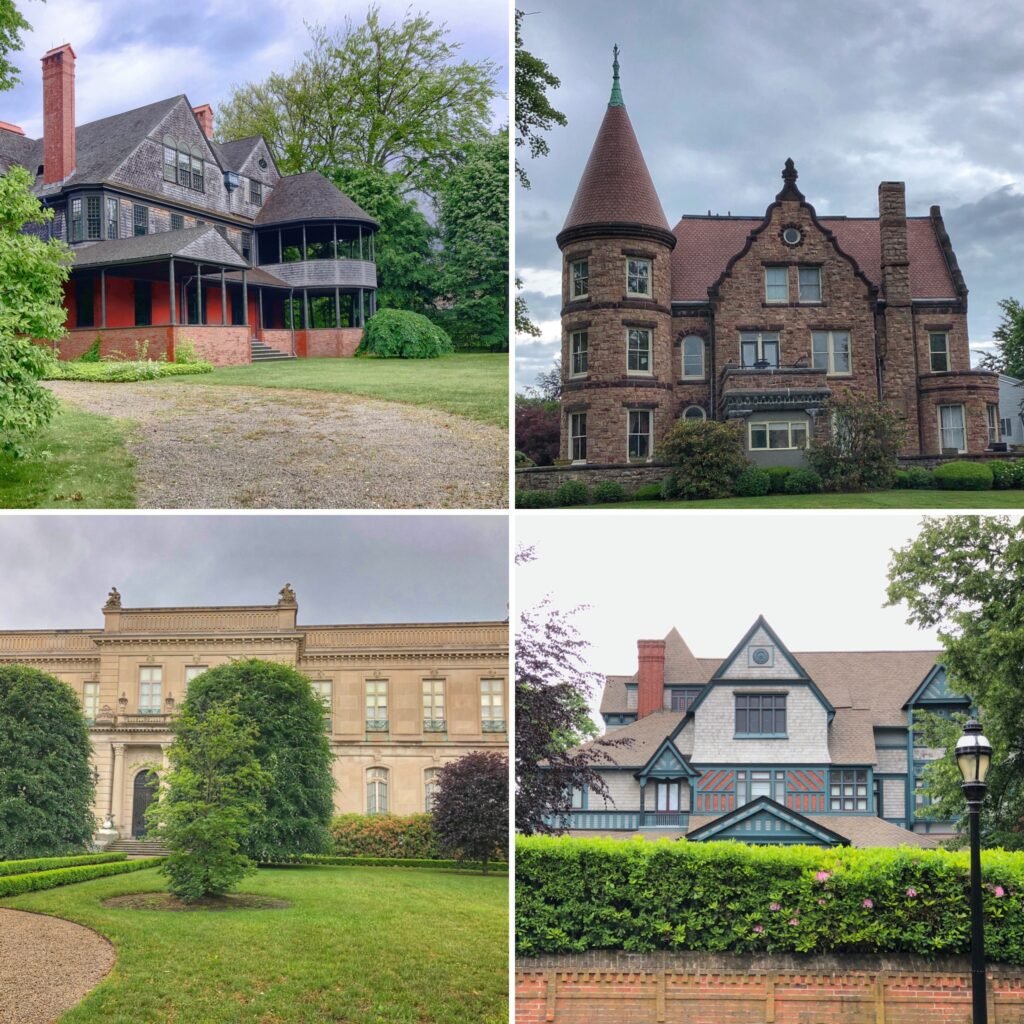
The pissing rain followed us as we trod drippily along to absorb the opulence of the Gilded Age mega mansions. The prices to visit the inside of the mansions were also designed for a millionaire ($28/ticket) ? so we gawked from the road, and stuck our camera through the cracks in the hedges with a few other peasants.

Pictured here is one of the more famous, the Breakers, the summer “cottage” of the Vanderbilts built in 1893-1895. Thanks to the aforementioned pissing rain, we reluctantly didn’t do the Cliff Walk, a miles long walk along the edge of these “cottages” perched above the ocean. We were very disappointed as this is one of the highlights of Newport.
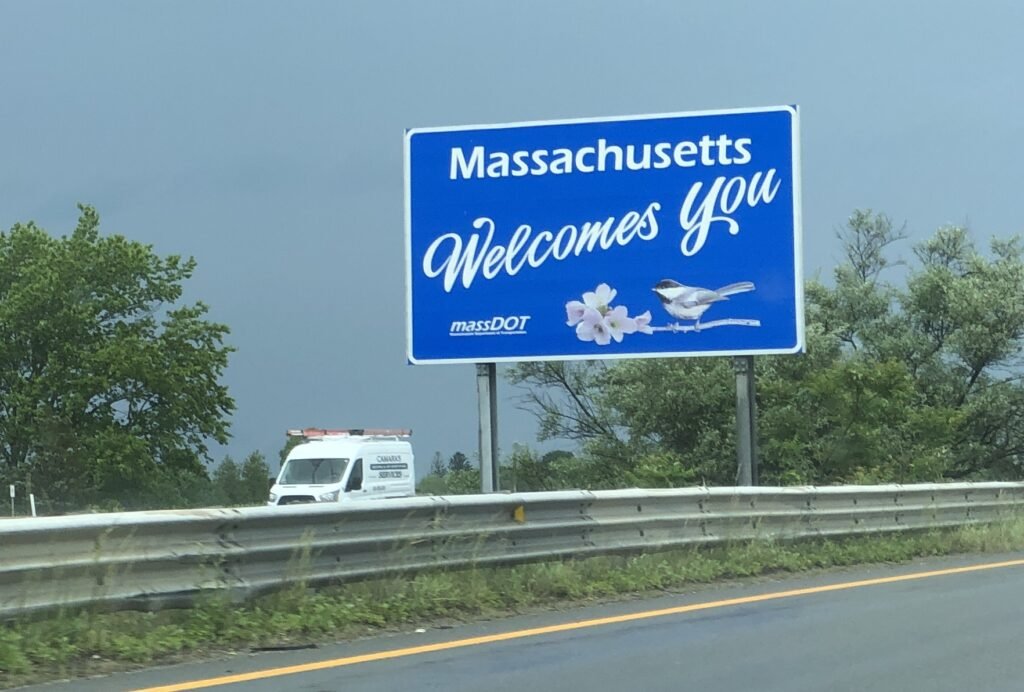
Massachusetts
Ah, well. Off to the next state!

Which brought us to Fall River, Massachusetts and a big hunk of “Rolling Rock.” According to Roadside America, before the dawn of history, a glacier left a big roundish rock atop a flat rock pedestal, which is now permanently plopped in a busy intersection in the city of Fall River. It remains here thanks to the Fall River citizens of the early 20th century, who waged a 25-year battle to thwart the forces of traffic safety and keep their beloved rock where it had always been. At one time the rock really did roll — or rock back and forth — and it was said that the local Indians would torture prisoners by rolling the rock onto their arms and legs. By the 1860s, however, the Indians were gone, and the rock was anchored to prevent any further crushing of limbs.”
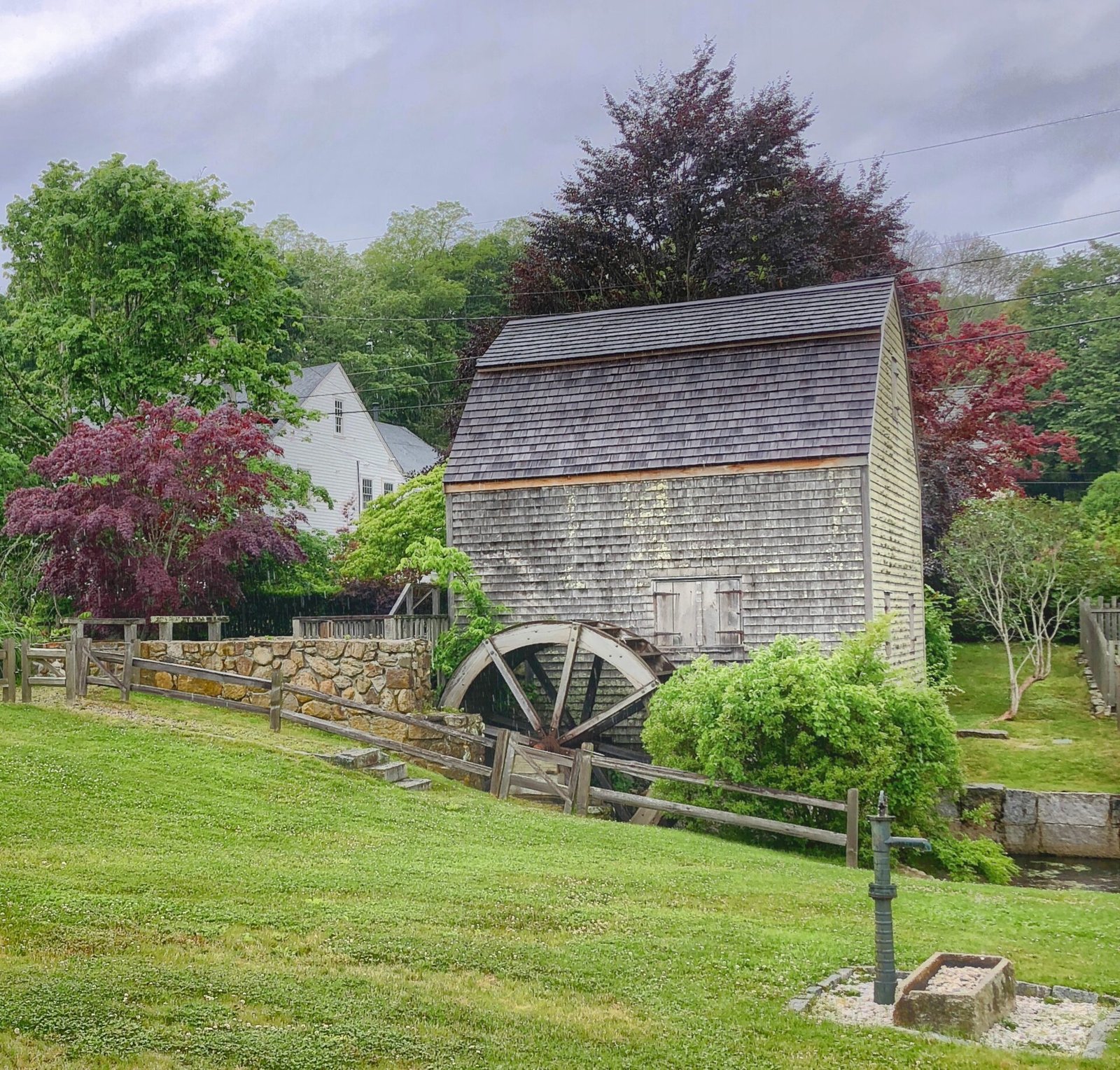
In Sandwich, Massachusetts we found our way to Dexter’s Grist Mill from 1637.

Our plan for Cape Cod was to drive out to Provincetown, or the “notable hook” of Massachusetts. However, the rains continued to come down in sheets and time was escaping us, so we only made it about halfway down the Cape. During a rain break, we were at least able to get out take a walk toward the beautiful shore.

The beaches here are a mix of rock and sand, according to this local.

On Cape Cod, we laughed when we saw the roundabouts are called rotarys. Would a millennial even get this?!
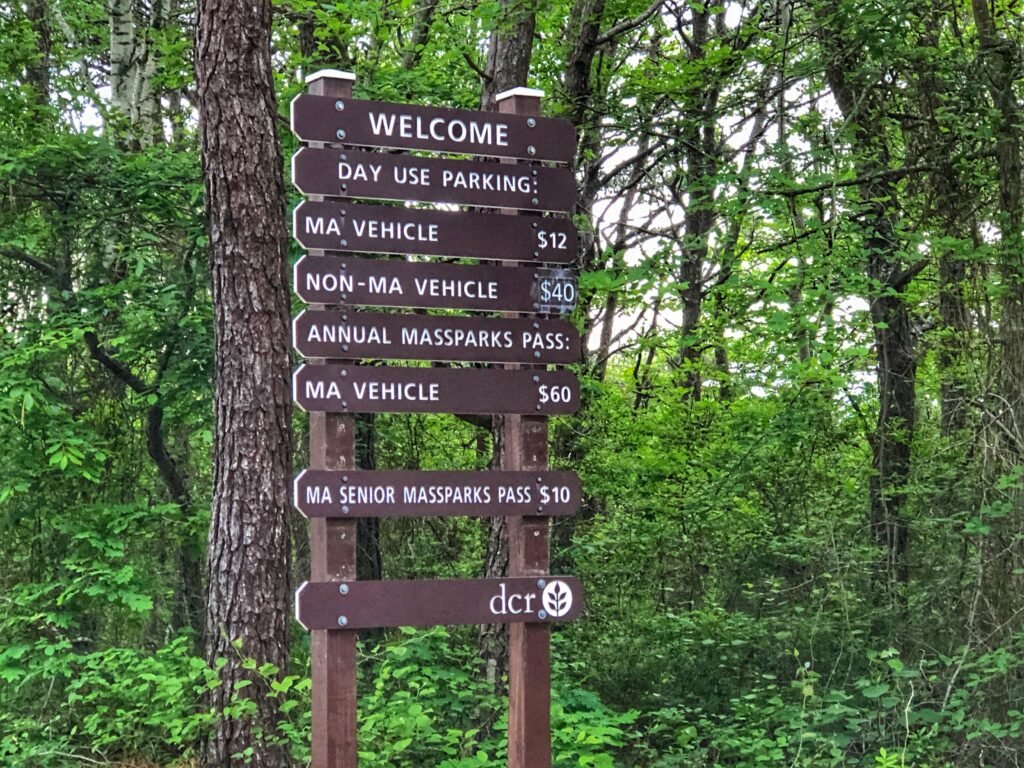
Stopping for dinner at South Cape Beach State Park, we were utterly flabbergasted to see the day use prices to use a public beach. ? Fortunately, we went after five o’clock so it was free!

These waters on the Cape are quite beautiful, but they’re not exactly the best for swimming unless you’re comfortable with becoming a tasty snack. The number of sharks, including Great White sightings, has increased significantly in recent years. And yes, the movie “Jaws” was filmed on Martha’s Vineyard in this area! ?
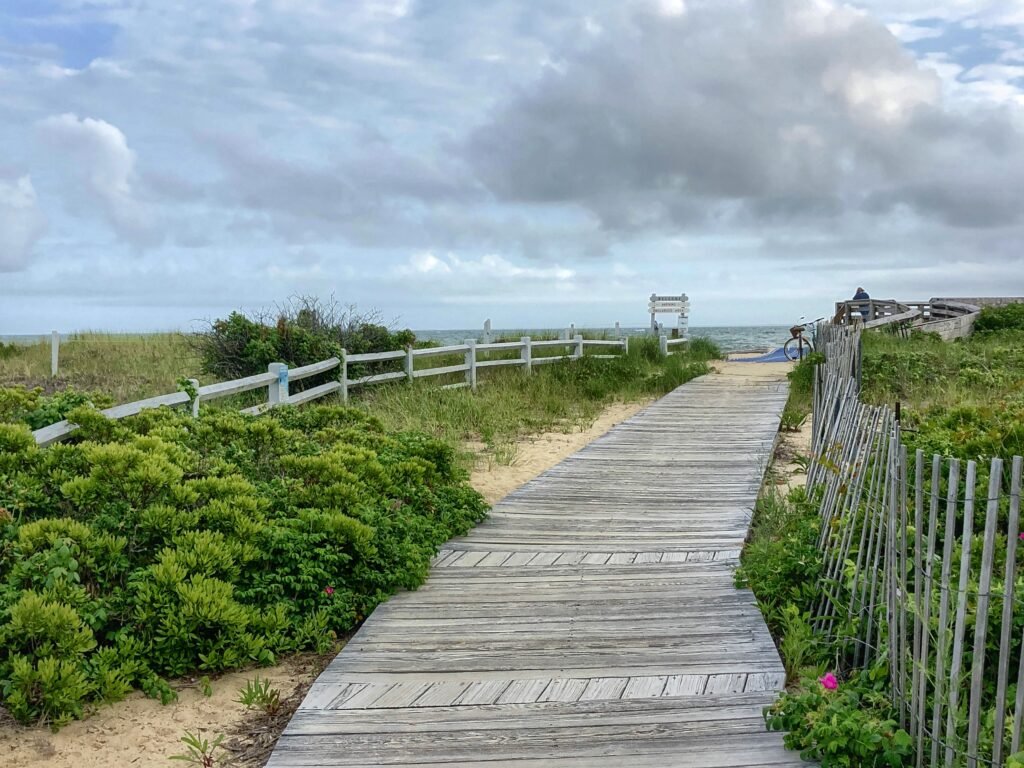
Couldn’t get more picturesque, however.

Thanks to generous friends of Mandy’s we were astounded to land a wonderful and free place to camp on an empty wooded lot in Woods Hole. Woods Hole is a village on the elf heel of Cape Cod, which on the map appears that it is stepping on the large stone of Martha’s Vineyard. According to the locals, it’s a village known for lots of scientists, including ones who worked on uncovering mysteries of the Titanic. Not surprising, they were also wearing masks. They even marked off the driveway Massachusetts-style with buoys for us. Couldn’t have asked for more!

The next more we got up at 5:30 or 6, as we grew accustomed to doing due to the early sunrises and headed straight to the Nobska Lighthouse in Woods Hole.

Just idyllic.

Quintessential New England!
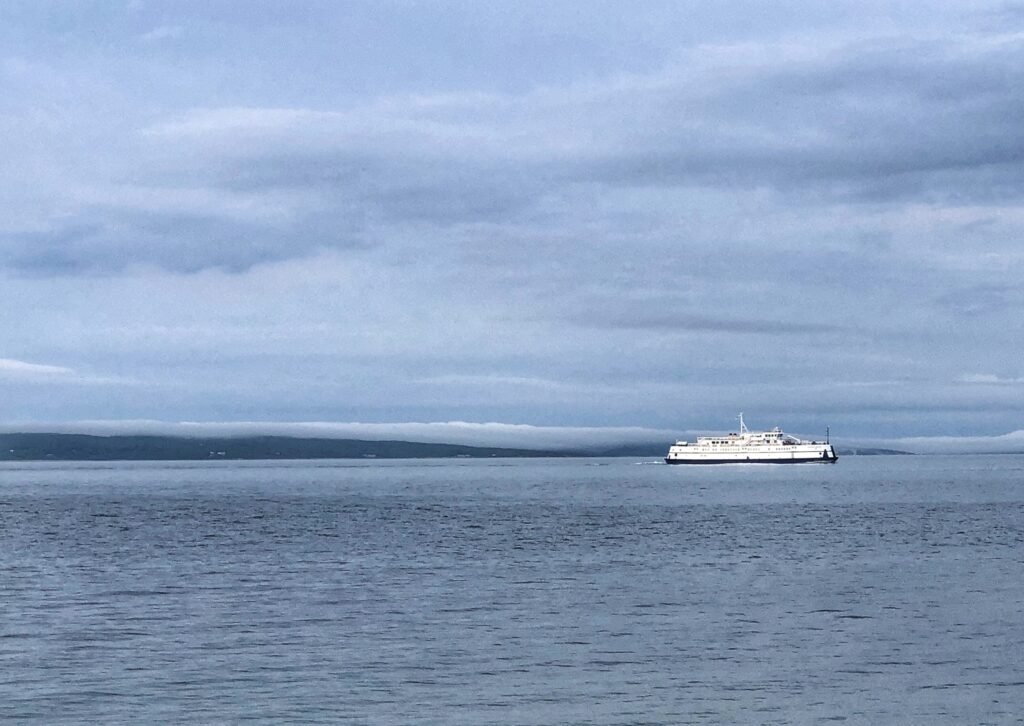
A ferry heading across the sound to Martha’s Vineyard. This island is one of the priciest places in the United States to vacation and celebrities like Oprah Winfrey, Bill Gates and Larry David have been spotted here. Needless to say, we just watched the ferry…haha!

After the lighthouse, we grabbed coffee at Pie in the Sky Cafe, which is a local favorite.
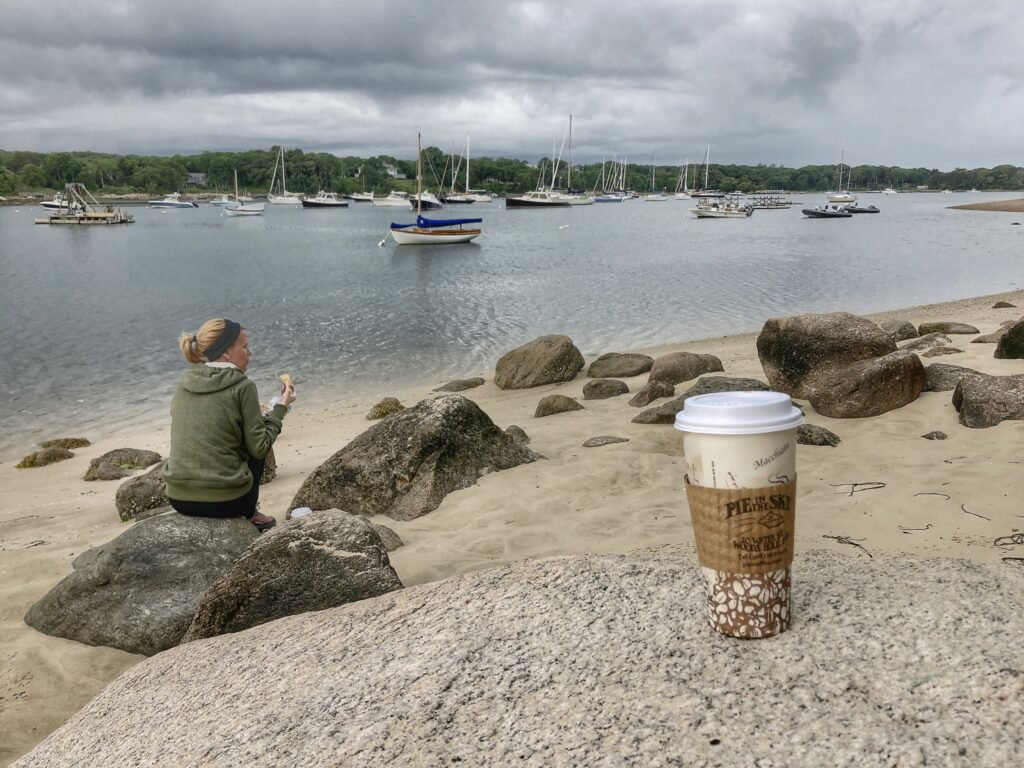
And enjoyed it out on “the Knob,” also recommended to us by our friends. It couldn’t have been a more tranquil way to greet the morning. Until it started raining. Again. Sigh.

So, you may have noticed that there’s loads of rocks, holes and knobs in Massachusetts. How fitting for a former British colony. But of course we couldn’t leave without gazing upon the rock of all rocks….aka the one at Plymouth. All Americans get drilled into us the story of this fateful rock where the Pilgrims landed from England in 1620. In our folklore, it’s kinda a big deal. However, when you actually see it in person, if it’s even visible due to the tide, the words that tend to fall out of people’s mouths are, “Is that it?!” According to Roadside America, “What we know today as Plymouth Rock isn’t even the whole rock; it was hacked off of a larger rock in 1774, dragged to various locations for a hundred years, then brought to this site on the water’s edge in 1880. Someone then chiseled the date 1620 into it, at which point the Rock became official.”

“For a simple rock, Plymouth Rock has become a surprisingly controversial American icon, marking the spot where the Pilgrims first set foot on America in 1620. Maybe. The tale of the Rock wasn’t reported until 1741, long after anyone who could dispute it was dead. And most New Englanders point out that no sailor would risk breaking a boat by parking it next to a rock.
Some people hate the thing. In 1970 the American Indian Movement painted the Rock blood red, a vandalism that has been unimaginatively repeated many times. In 1995 another group of protestors jumped into the sand pit and buried the Rock. Most visitors are content to walk around the pit on the portico’s elevated platform. Not knowing what to do at an attraction that’s just a rock, they throw pennies at it.”

Also in Plymouth is the National Monument to our Forefathers which was evidently a big achievement for 19th Century New Englanders who wanted to make everyone conveniently forgot that the Virginians, as well as the Vikings, were actually here first. It is 81 feet tall, is the largest solid granite structure in the US and lists all 102 passengers on the Mayflower. 45 of these 102 passengers died during the crossing.

Speaking of the Mayflower, this is supposedly the sequel, built to size and scale of the original rendition, and recently renovated. You can tour for $15/ticket. The original transatlantic ticket from UK to Plymouth cost 5£ ($7.)

The Richard Sparrow house from 1640 is the oldest surviving house in Plymouth. It was built by an English surveyor.

The Jenny Grist Mill is a reproduction mill and water complex. One of the first grist mills for grinding corn.
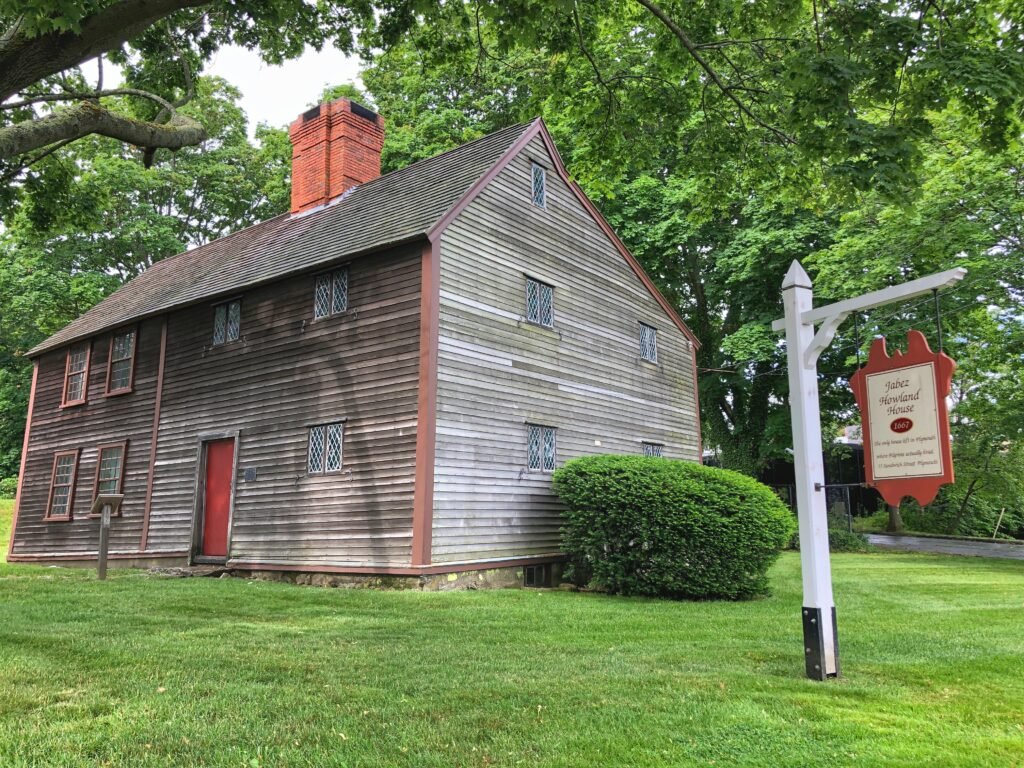
The Jabez Howland House is the only house left in Plymouth where pilgrims actually lived. It was built in 1667.
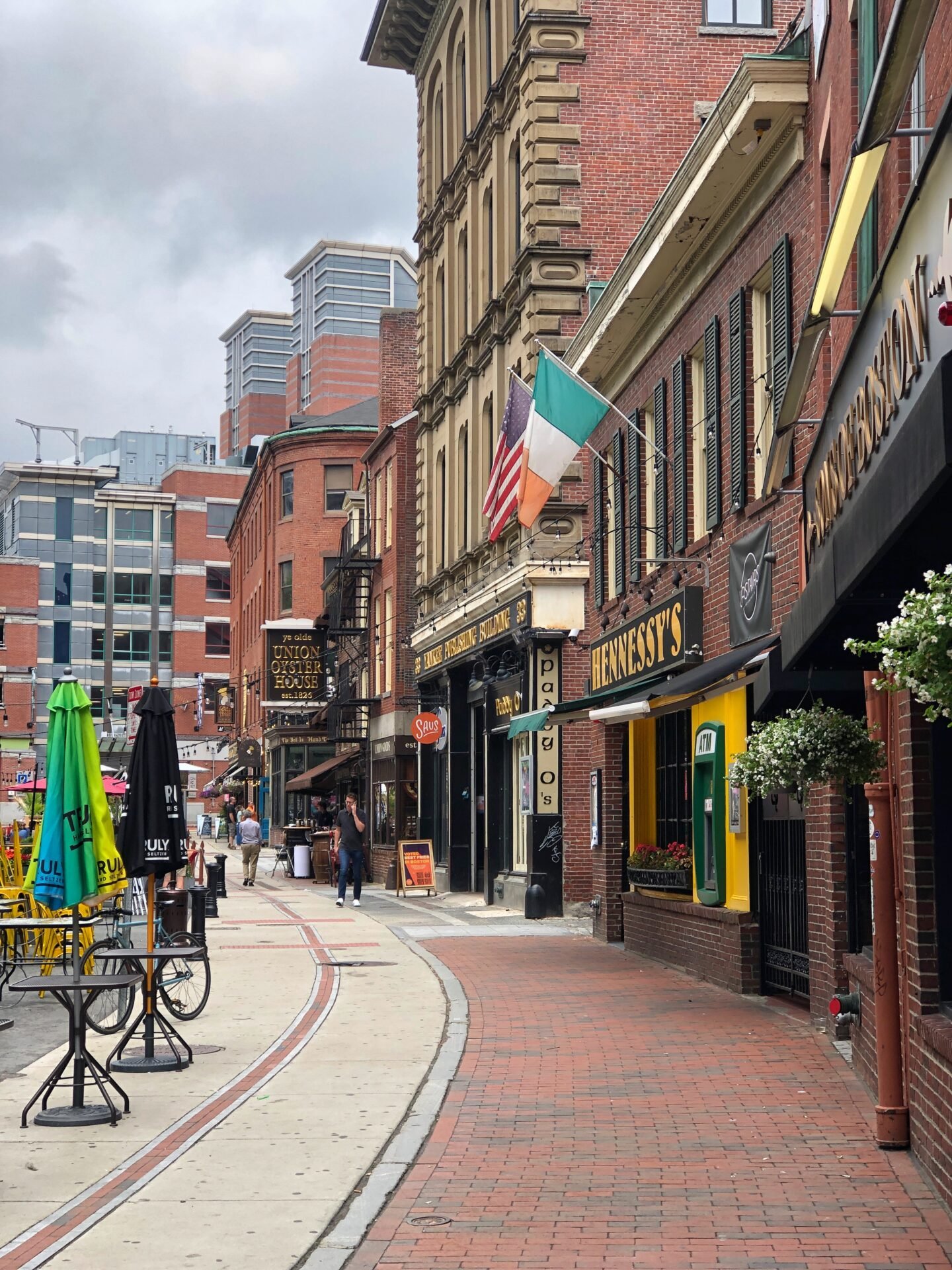
Moving on, we trucked through Beantown (aka Boston) at a breakneck speed…the complete antithesis of our normal travel style. This was because a downtown parking spot in the public garage would have set us back $24, so we opted for a street meter which was $4 for two hours. Thus, we had…two hours…to get a flavor for of the Bean.
Since keeping on budget is the name of our game, we figured the best way to do this was to follow as much of the city’s free innovative walking tour, called the Freedom Trail, as we could during our designated time. The Freedom Trail leaves from Boston Common, (1634) the country’s oldest public park, and can be followed by a simple stroll along the red brick path! It’s a great way to see all the sights especially with limited time!
Stepping into Boston feels very much like stepping into the UK with the architecture, the pubs and the overall vibe. Not to mention, it’s incredibly compelling to walk amongst all the historical characters we’ve heard of all our lives!

The Old South Meeting House was built in 1729 as a Puritan Meeting House. Benjamin Franklin was baptized here and in the years leading up to the American Revolution, the colonists met here to challenge British rule. And in 1773, it’s where 5000 colonists met to protest tax on tea, which led to the Boston Tea Party, when 342 chests of tea were dumped into the harbor by colonists disguised in Native American garb. The chests held more than 90,000 lbs. (45 tons) of tea, which would cost nearly $1 million dollars today. This event was the first major act of defiance to British rule over the colonists. (History.com)
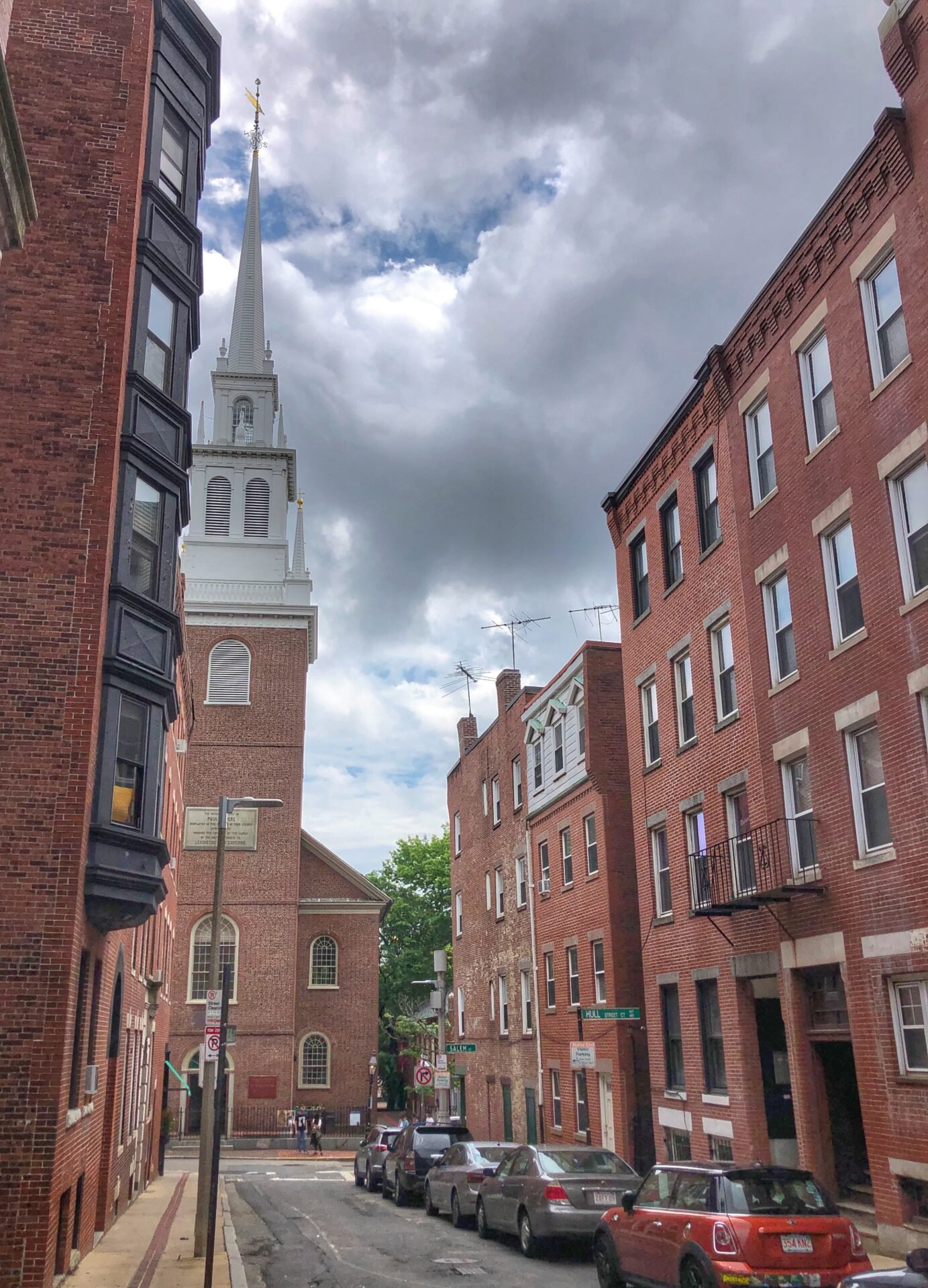
Speaking of defying those Brits, this is the church where in 1775 Paul Revere displayed the lantern alarm that the Brits were coming! This led to local militiamen clashing with British soldiers in the Battles of Lexington and Concord marking the “shot heard round the world” that signified the start of the Revolutionary War.

Speaking of Paul Revere, this is where he has lain since 1818 in the Granary Burial Ground. This cemetery is also where the victims of the Boston Massacre were buried.

In the same cemetery, we were intrigued to find the center tombstone marked as “Franklin.” But alas, we quickly learned it was Ben Franklin’s parental units and not the actual model from our $100 bill. That Benji rests in Philadelphia.

Speaking of our founding fathers, you might remember a certain document called the Declaration of Independence. You might also remember that the largest signature on that document was John Hancock’s. If you zoom in, you’ll also notice this phallic-looking memorial was ‘erected’ as that man’s tombstone…the tallest in the cemetery. Well, ok, then… ??

Definitely one of the most notable cemeteries we’ve been in!
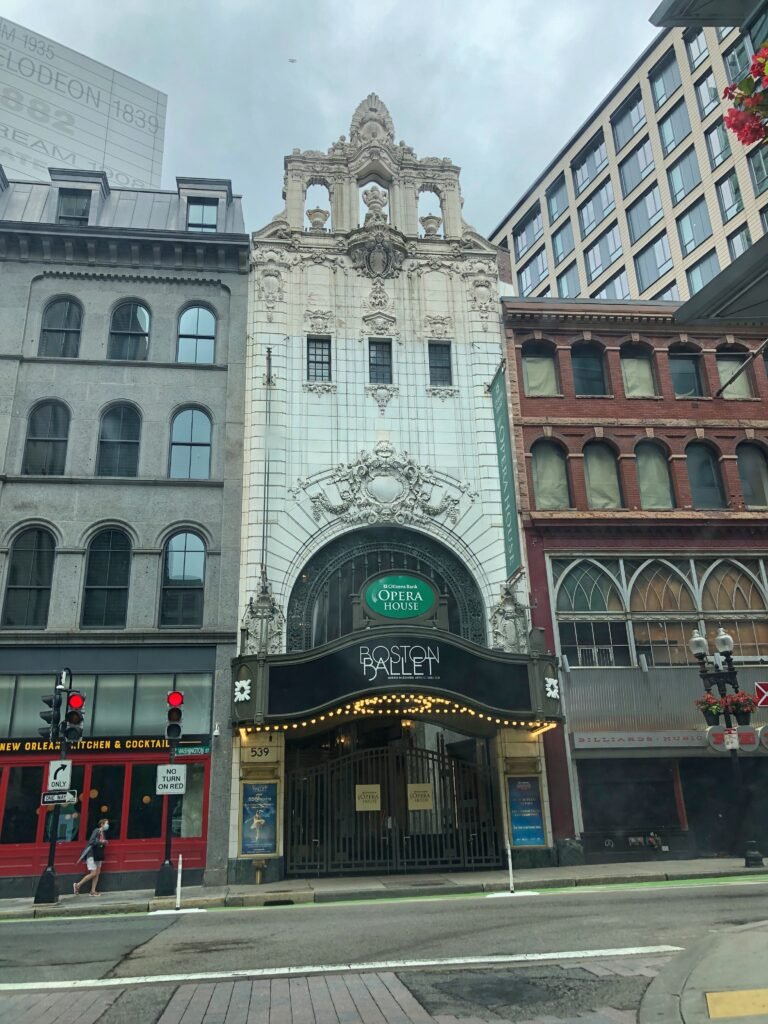
The Boston Ballet, one of the leading dance companies in the world

Boston Commons, the oldest public park in the US dates from 1634 and covers a whopping 50 acres. It has been used as cattle grazing grounds, the site of public hangings, where the colonial militia mustered, a British Redcoat encampment, a public burying site, anti-slavery protests, civil rights rallies (one addressed by Martin Luther King, Jr), and thousands and thousands of public events. The Golden-domed Massachusetts statehouse built in 1795 gleams in the background.
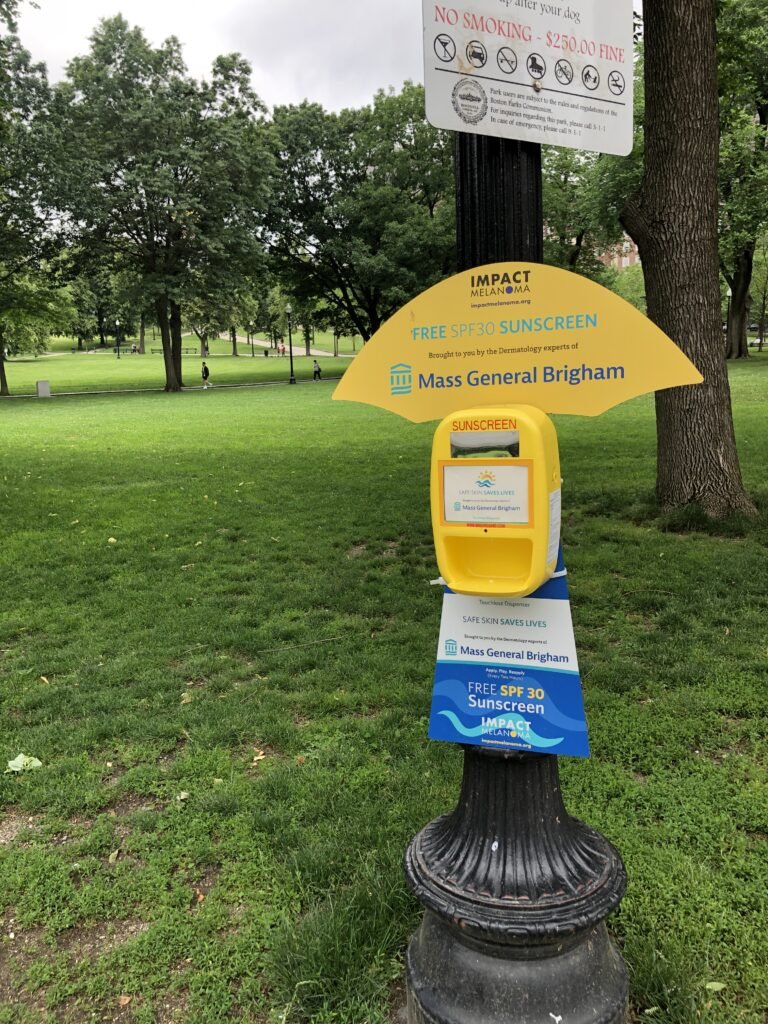
Boston is a progressive city with unique ideas. We loved the fact that the local hospital put out dispensers with free sunscreen in the park in an effort to fight melanoma.

The site of the first public school in the States. It was built in 1635 and famous alumni were Benjamin Franklin, Ralph Waldo Emerson, Samuel Adams, and John Hancock. This must be where he learned that sizable cursive letters!

Greg grabs a ride in front of Boston’s Old City Hall.

No matter where you go, books are waiting to be loved again! Love Little Free Libraries!

The Boston Customs House was the site of the Boston Massacre and today has been nearly swallowed by skyscrapers. But how exactly did it start? On March 5, 1770, a street brawl happened in Boston between American colonists and British soldiers. Later known as the Boston Massacre, the fight began after an unruly group of colonists—frustrated with the presence of British soldiers in their streets—flung snowballs, ice and oyster shells at a British sentinel guarding the Boston Customs House. Reinforcements arrived and opened fire on the mob, killing five colonists and wounding six. The Boston Massacre and its fallout further incited the colonists’ rage towards Britain. (History.com)

The historic Quincy Market from 1826 is a shopper’s and foodie paradise.
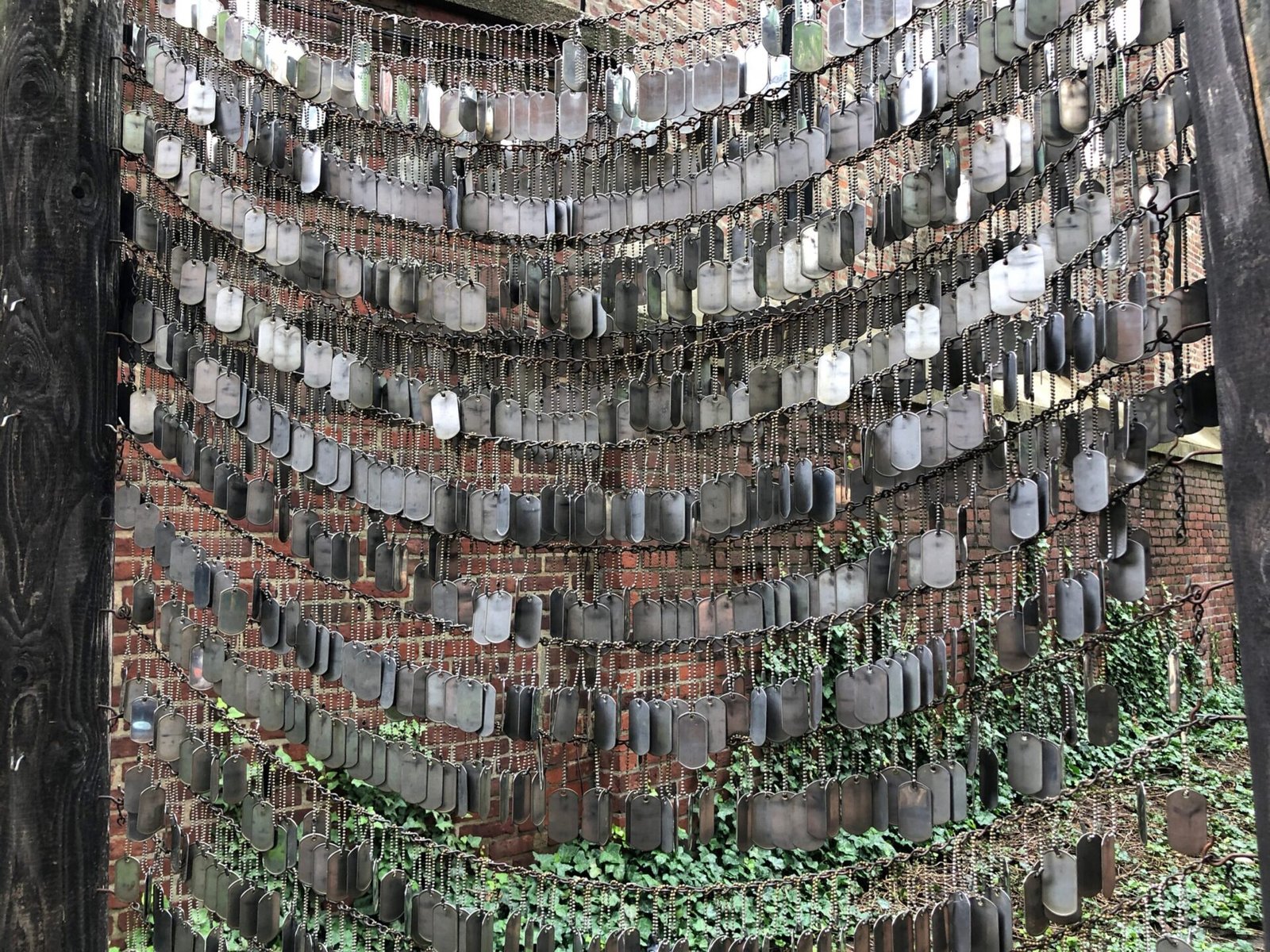
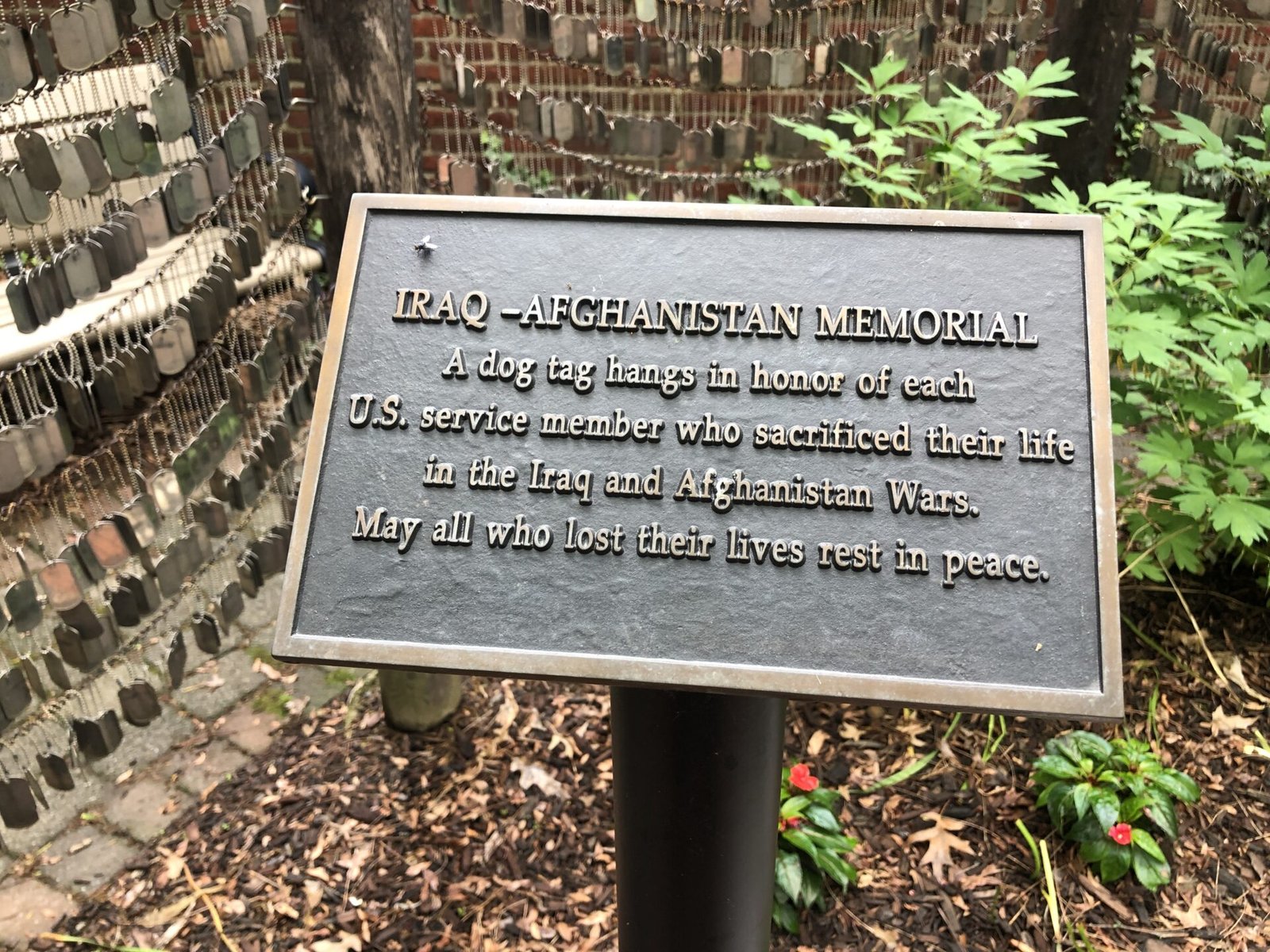
The Iraq-Afghanistan War Memorial…dog tags hang for all the service men and women who lost their lives. It was heartbreakingly a lot.

Another view that looks like it fell out of Ireland.

Street scene Boston. Lots of residential options here. We read that the average Boston rent is $2300 for a two bedroom apartment. Yikes!

The Custom House Tower was originally built in 1847, but the tower was added in 1915. It currently holds the Marriott.


Just thought this was cute! Have we mentioned the Italian influence in Boston?

The home of Paul Revere from 1770-1800 during the American Revolution. It is the oldest remaining structure in downtown Boston and was built in 1680. It’s truly remarkable to walk amongst such history.

Told you Boston was progressive ?

Stunning architecture everywhere!

Moving on, we headed for a quick (all-too-quick) stop in Salem. We first paused at the 1668 “House of Seven Gables” to pay a tribute to Nathaniel Hawthorne.
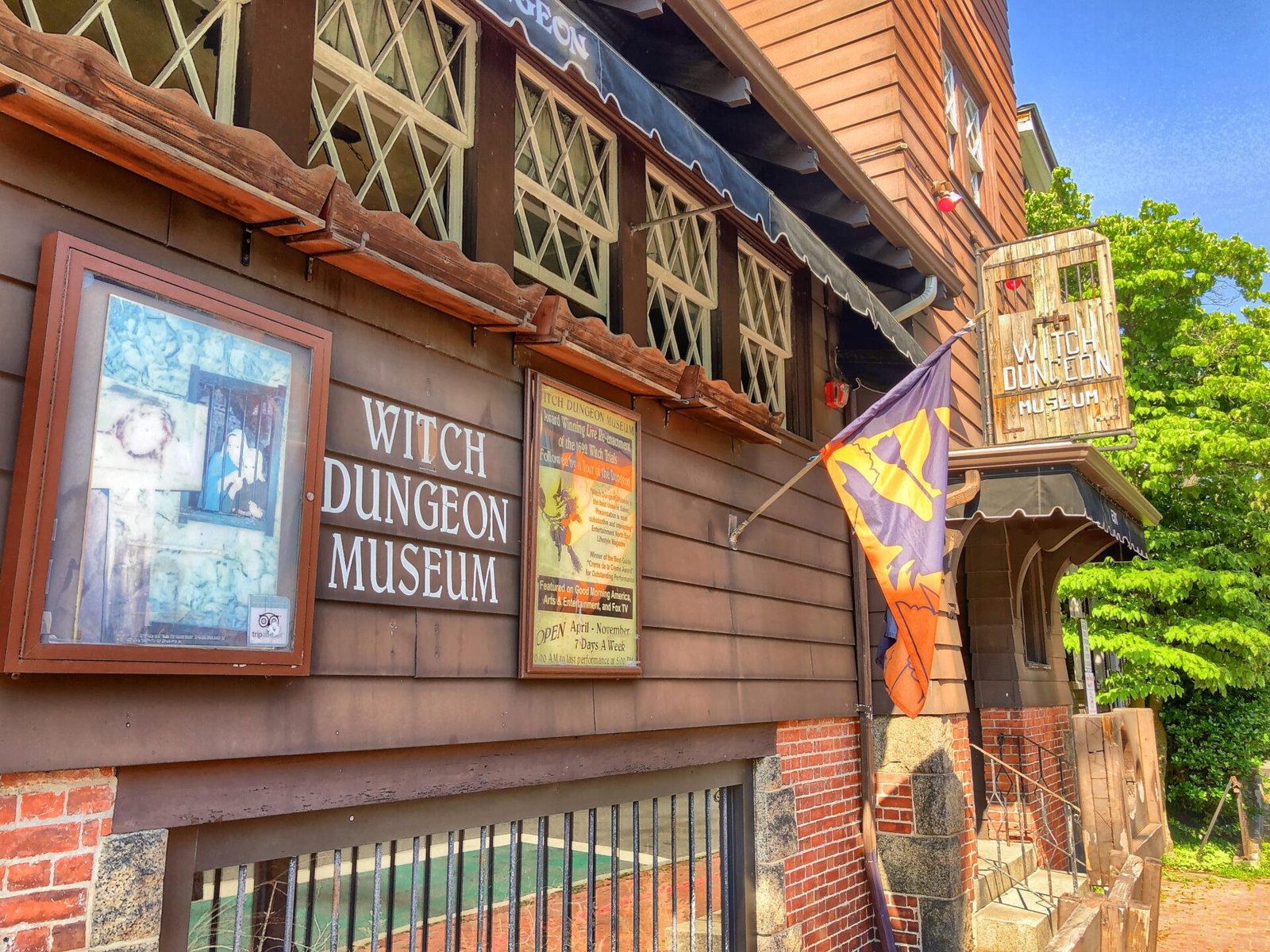
And of course, like everyone who comes here, our main motive was to learn about the Salem Witch Trials. We figured the quickest way to get a rapid dose of this was at the Witch Dungeon Museum, which cost $13. The museum gave a good dose of history, as well as a featured live witch trial. The Salem witch trials were a series of hearings and prosecutions of people accused of witchcraft between starting in February 1692. More than two hundred “witches” were accused, 5 died in custody, 19 hanged and 1 tortured to death. The most terrifying part, perhaps, was that anyone could be accused of engaging in witchcraft, and there was little they could do to defend themselves.
A few facts we learned:
-it was basically a land grab. So as soon as you were accused, your land got taken from you.
-Dorothy Good, the 4-year-old daughter of the previously accused Sarah Good, was the youngest to be accused of witchcraft.
-There was no need to provide evidence for accusing someone of witchcraft—just pointing fingers was enough—spectral evidence was often used during the trials.
-Men were also accused and tried.
-Salem didn’t burn witches at the stake; most of the accused witches were hanged. Giles Corey, because he refused to go to trial, was crushed to death by boulders.

The live trial began with some narration to the courtroom of tourists and then stage curtains opened to reveal a dozen trial participants. However, you soon realize that only two of these actors are actually real humans while the rest are dummies that fail to utter a word. Every summer new aspiring actors fill the roles.

Heading into the dungeon where up to 95 “witches” were crammed in a room made for 50. Prisoners were charged rent and food daily during their time in prison. This “room and board” was $30 in today’s money, so very expensive. Even after being proven innocent, if they could not pay it, they had to stay in prison until they could. Most of the deaths came from this.

The statue of Roger Conant, “The Puritan.” According to the New England travel planner, although usually thought to represent the grim severity of Puritanism, spectral Mr Conant was actually one of the good guys in early Salem, providing an example of courage and perseverance when the going got tough for the young colony. He helped others, and raised morale to make it through the difficulties.”
And onto New Hampshire…


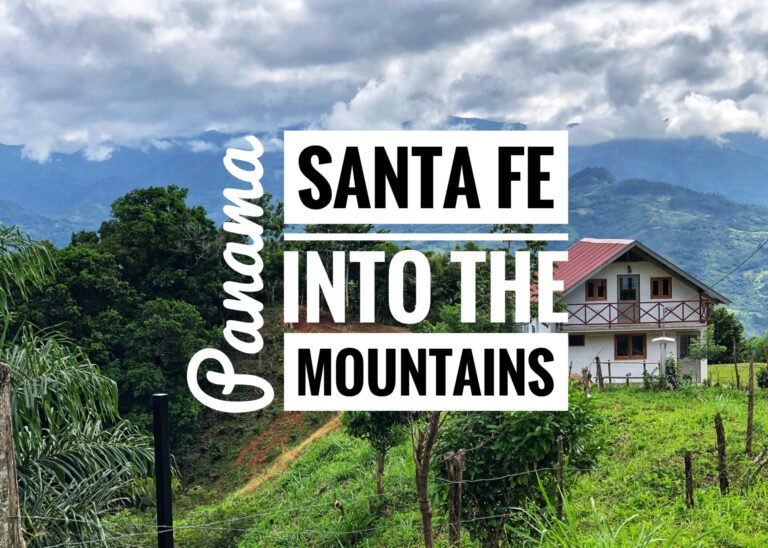
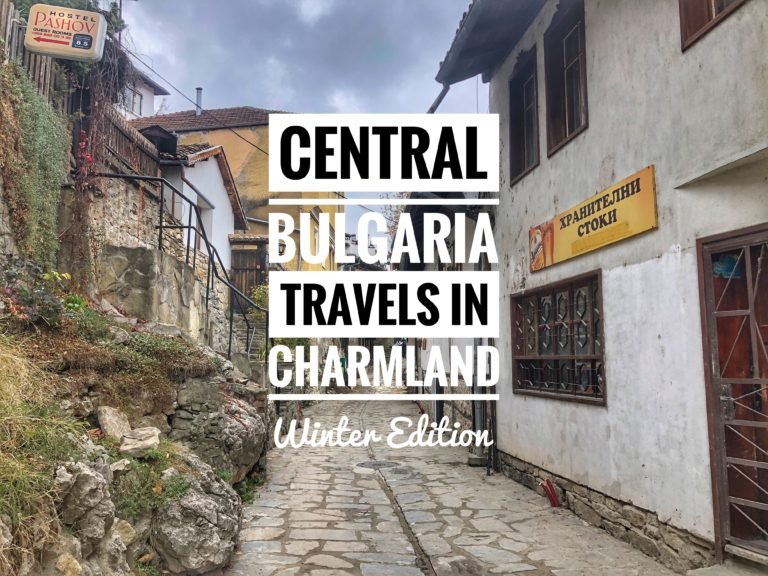
OMG. This is amazing. The pictures look like they need to be in a book. What a great trip you had. I love it!! This has alot information that could be so helpful. Thank you for sharing. God Bless you both as you continue your journey. I love that you can be so free and enjoy life. By the way Google does have a tendency coming between couples. 😉
Thank you so much for your comment and kind words, Camery! So glad to hear you found some inspiring and helpful information in the post 🙂